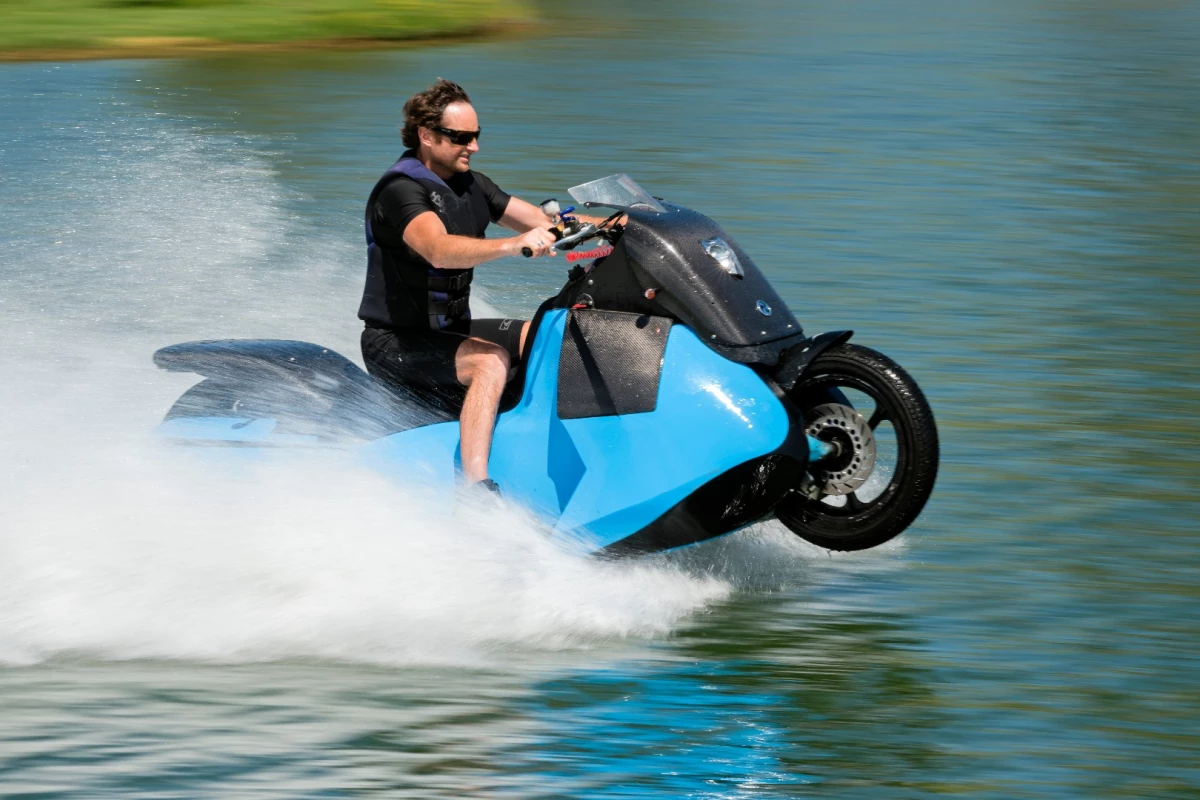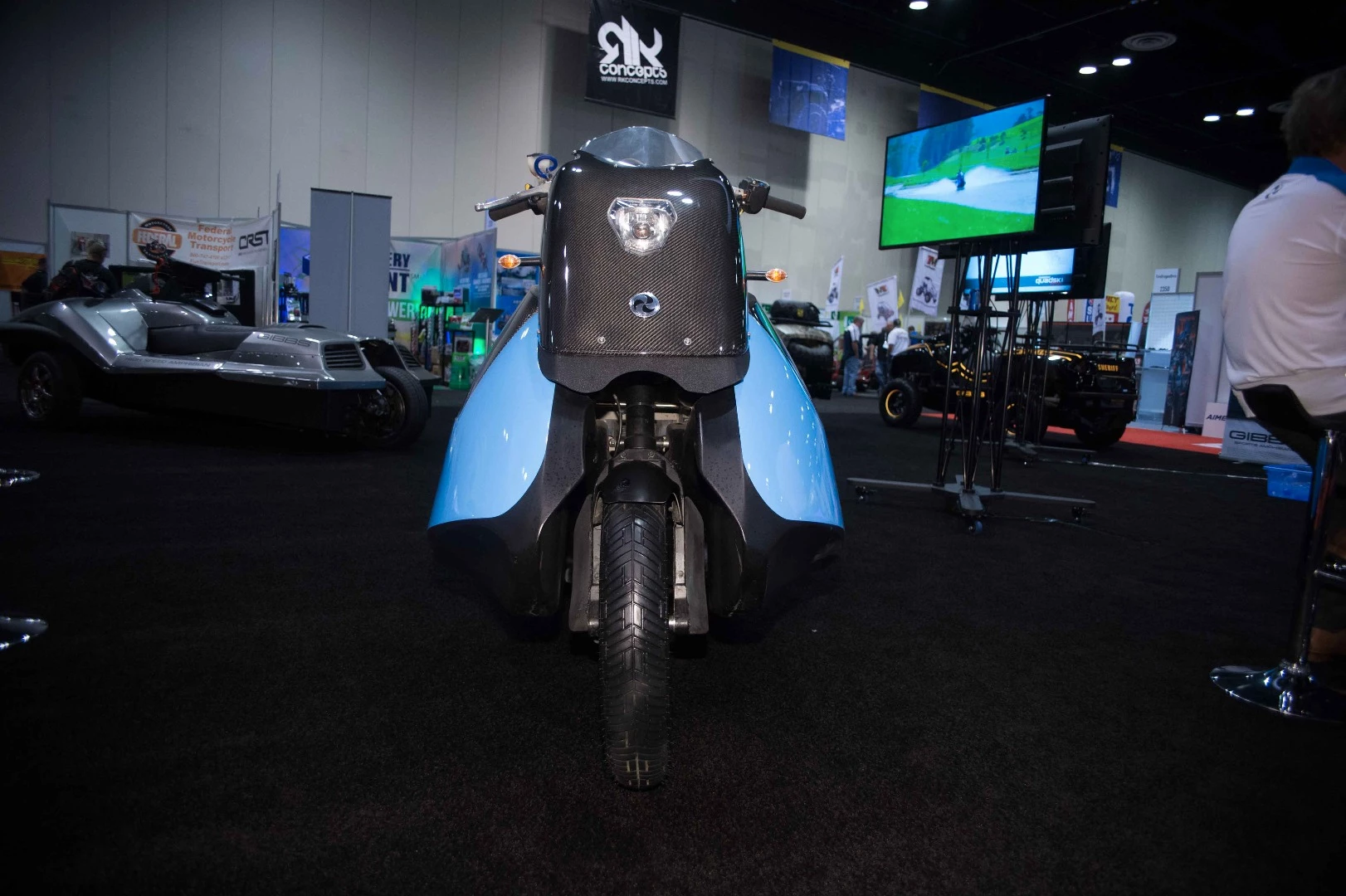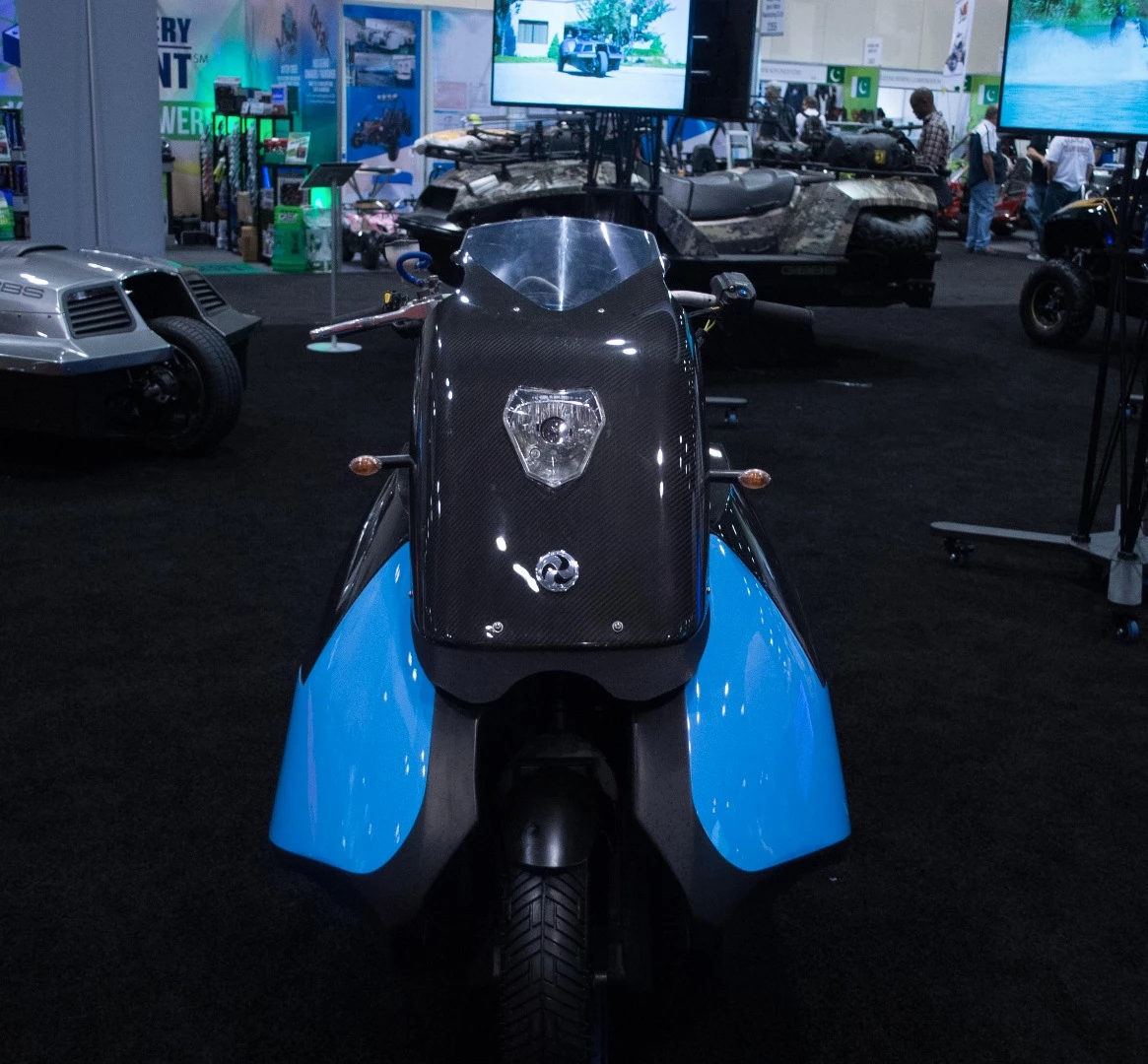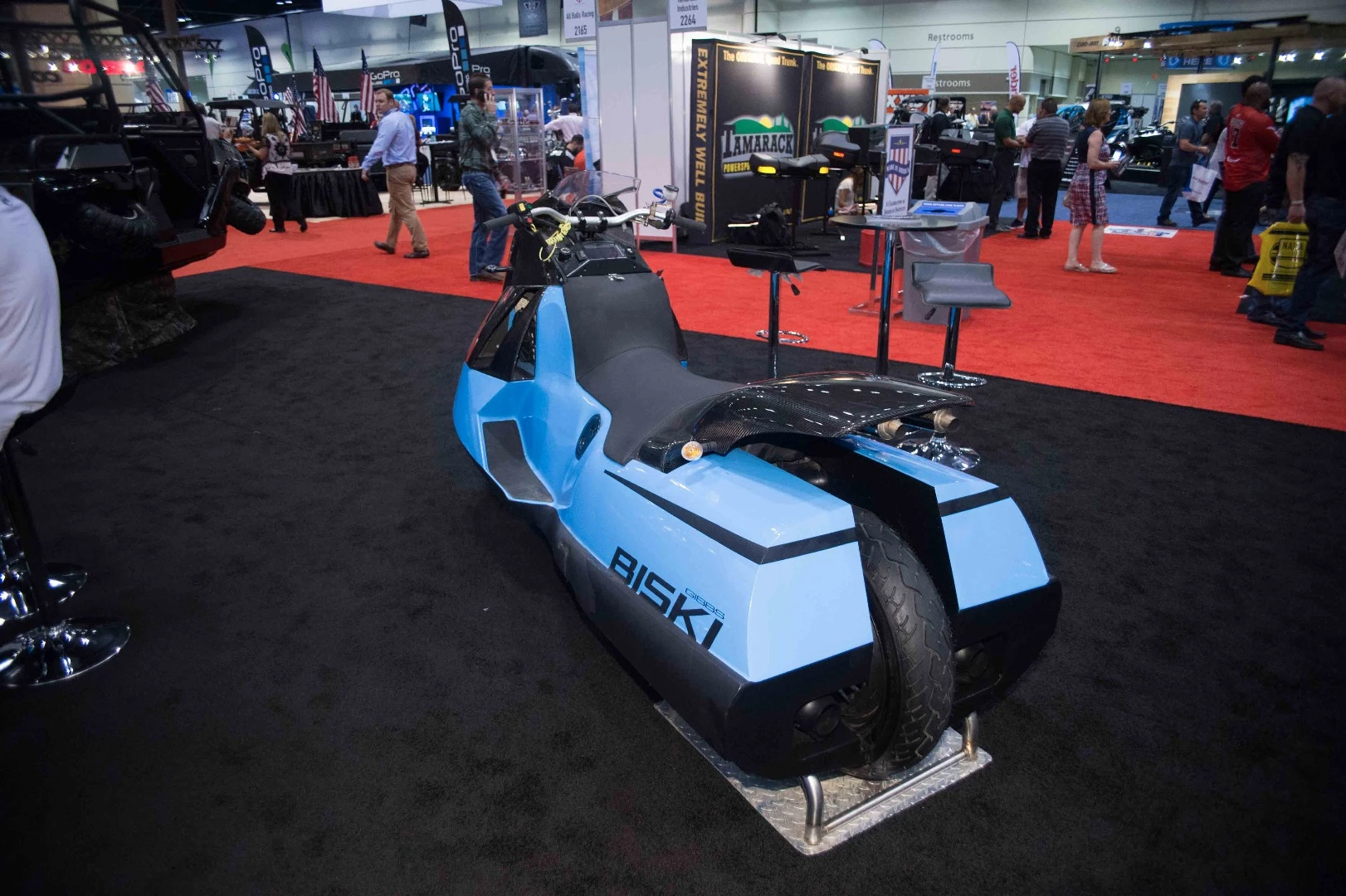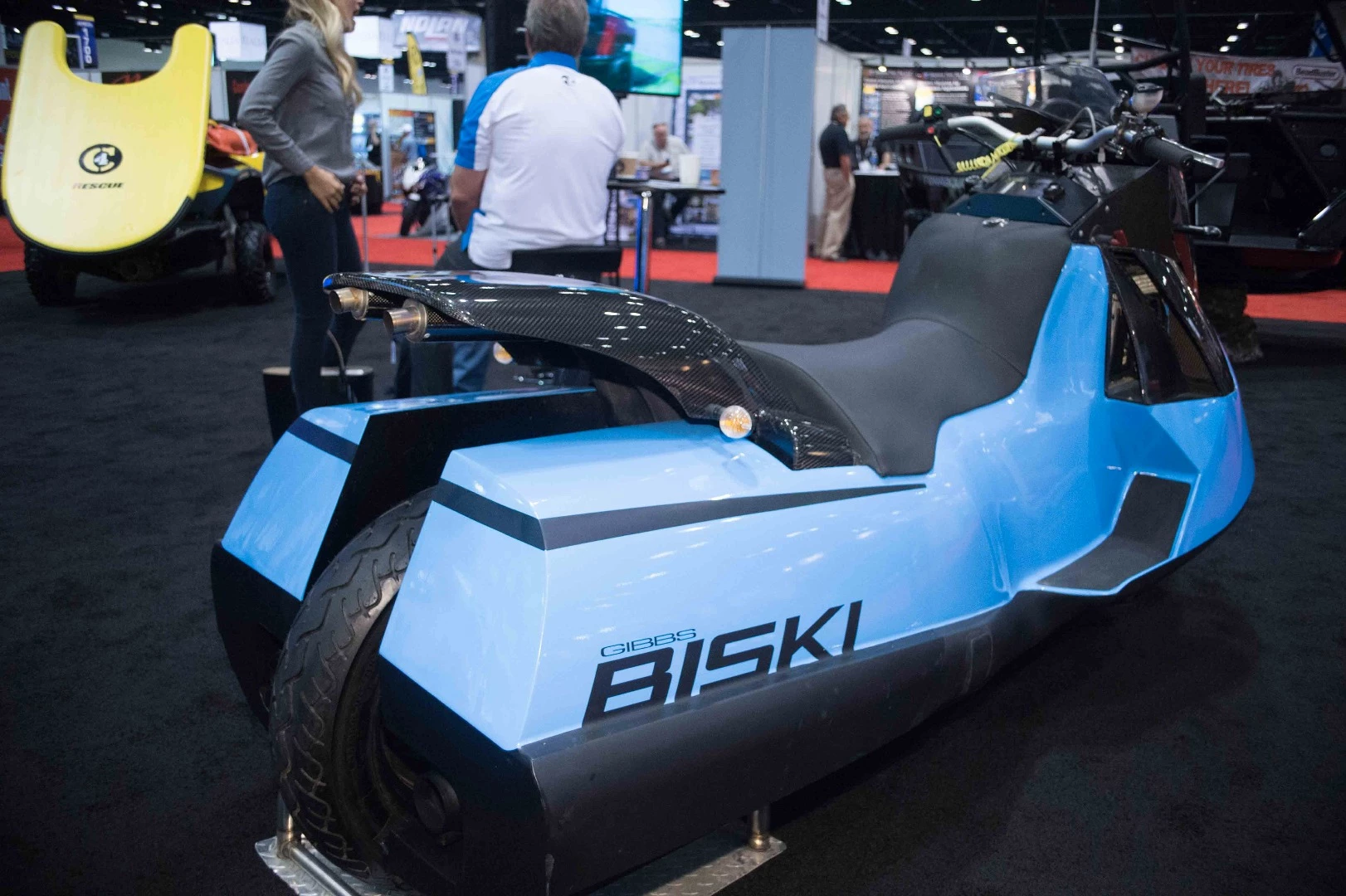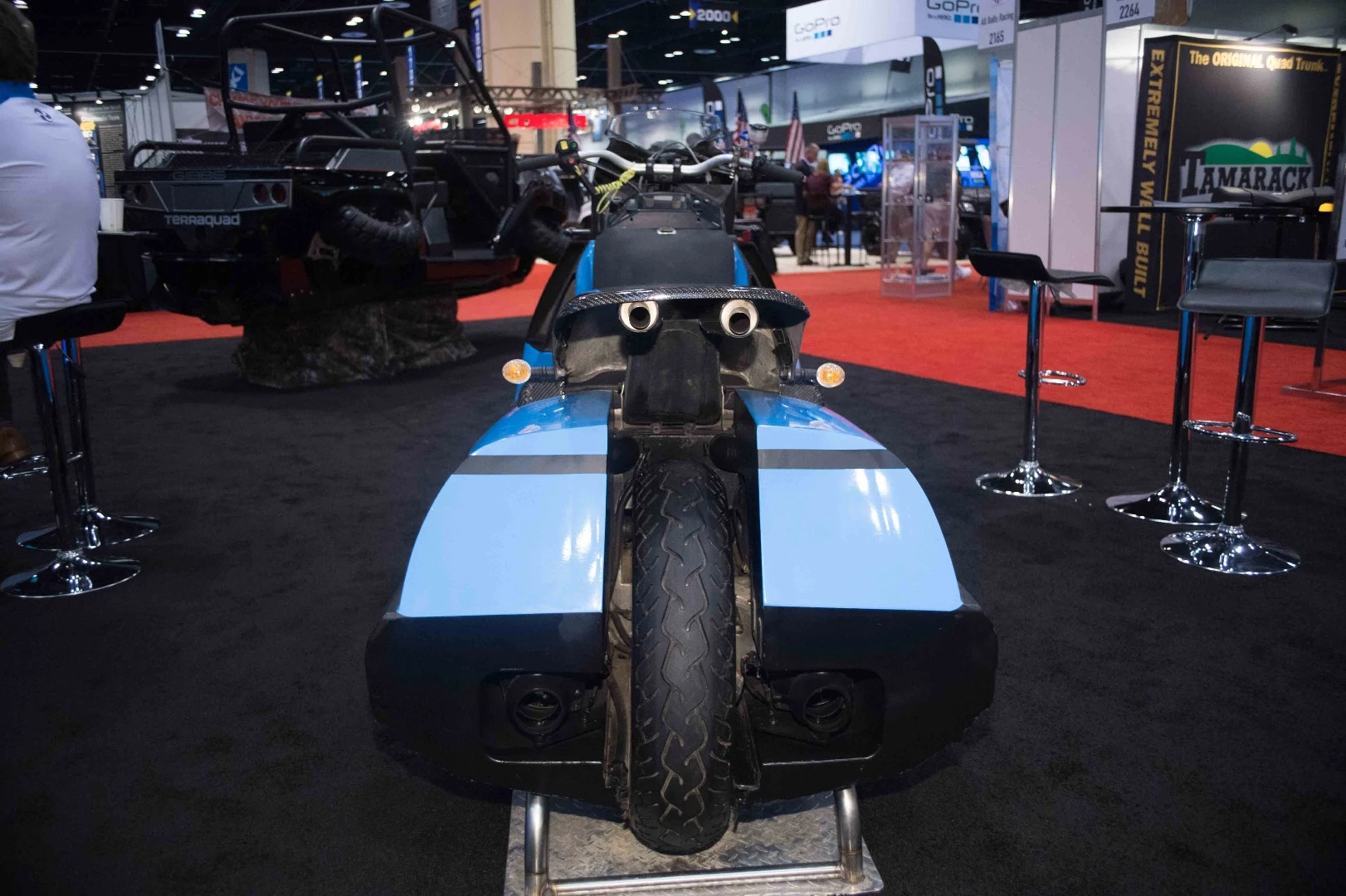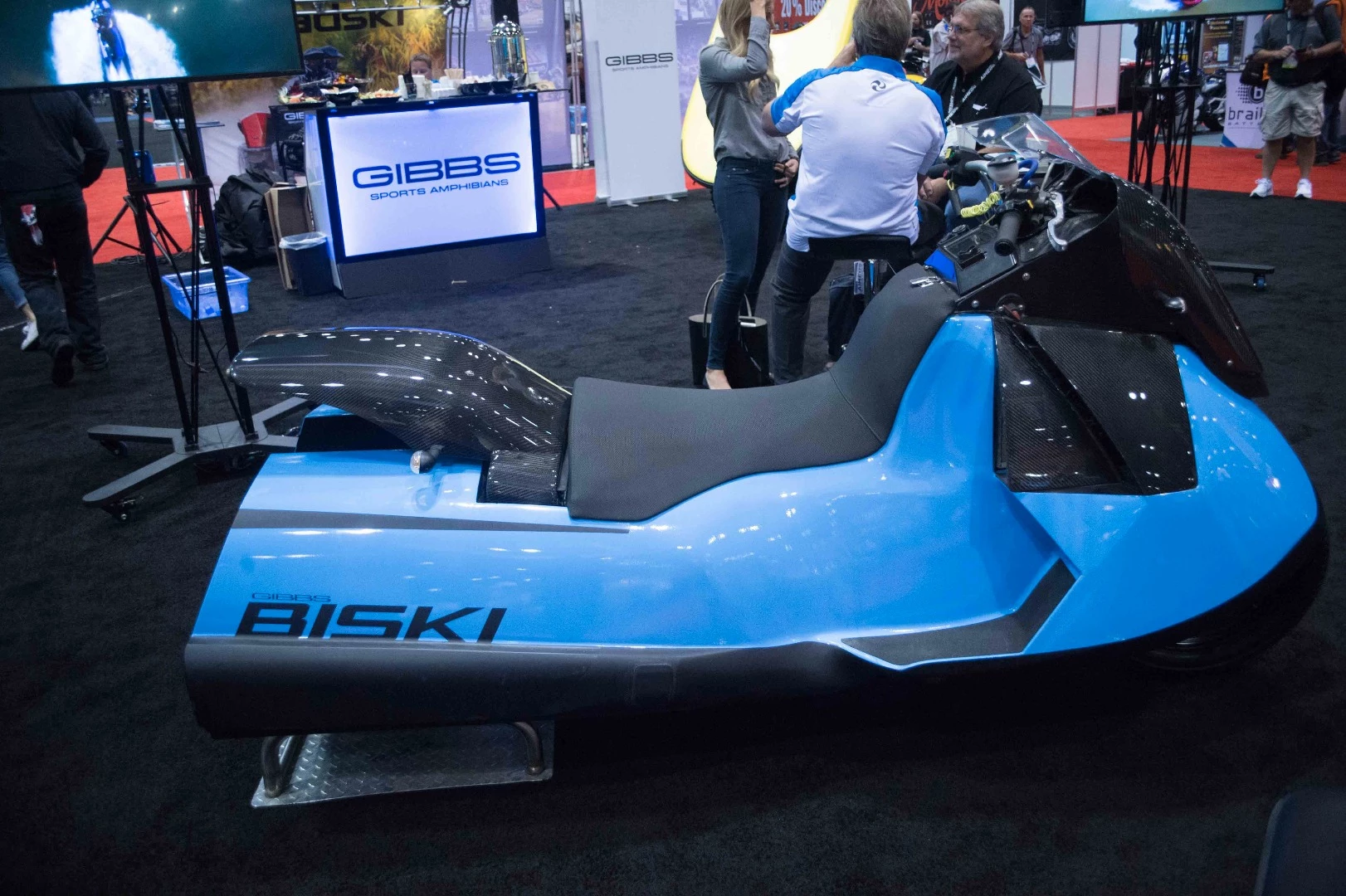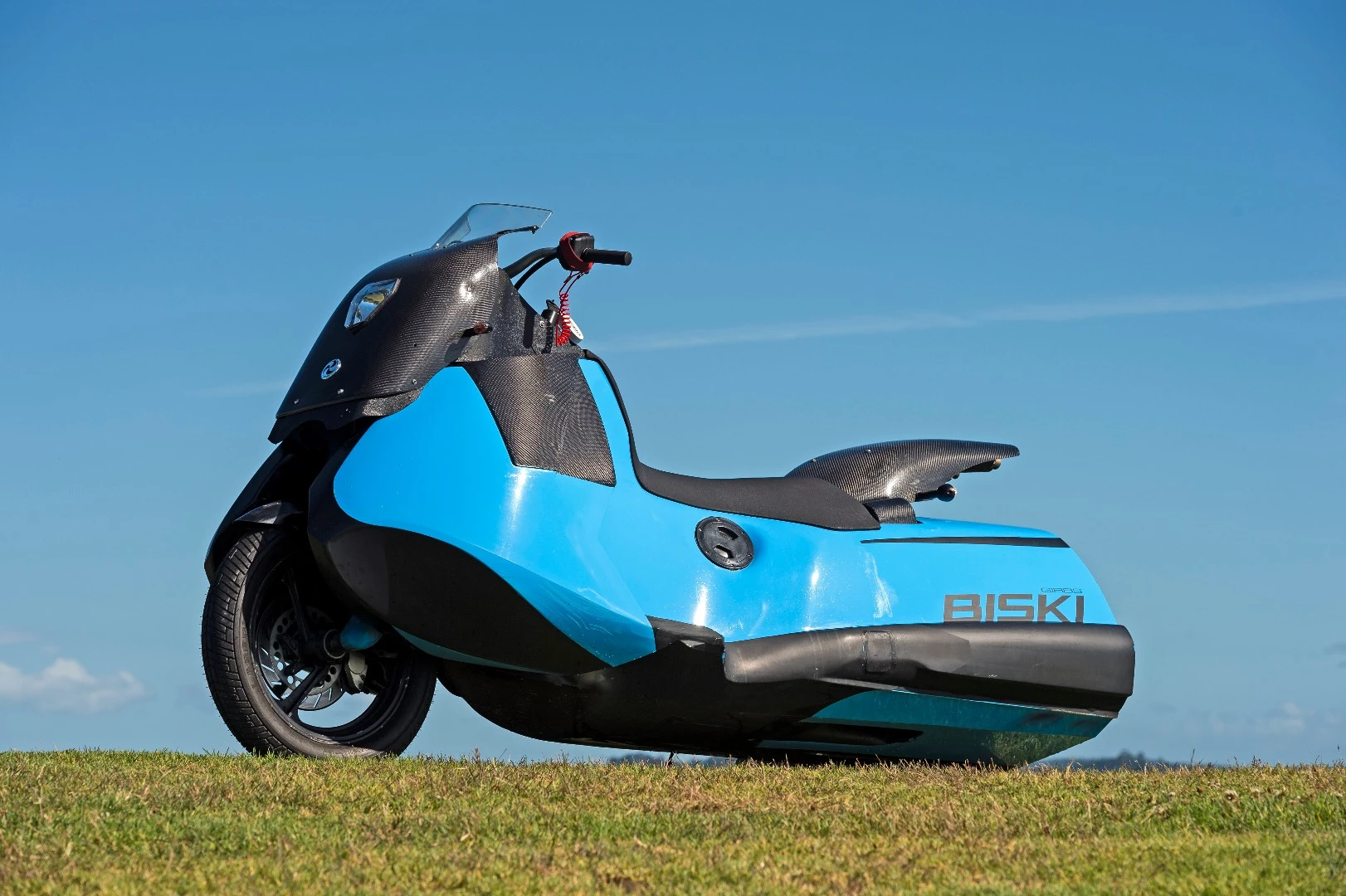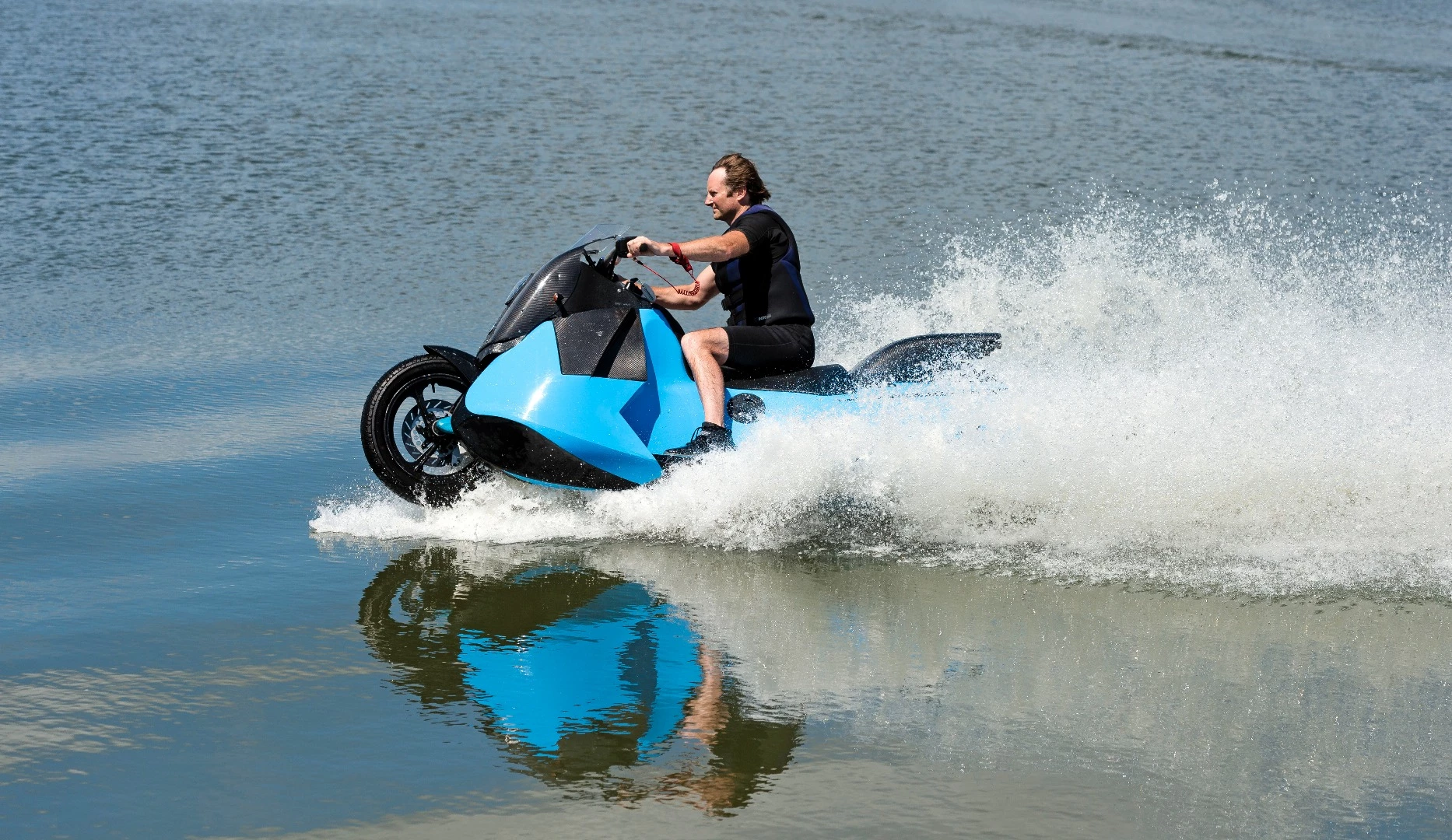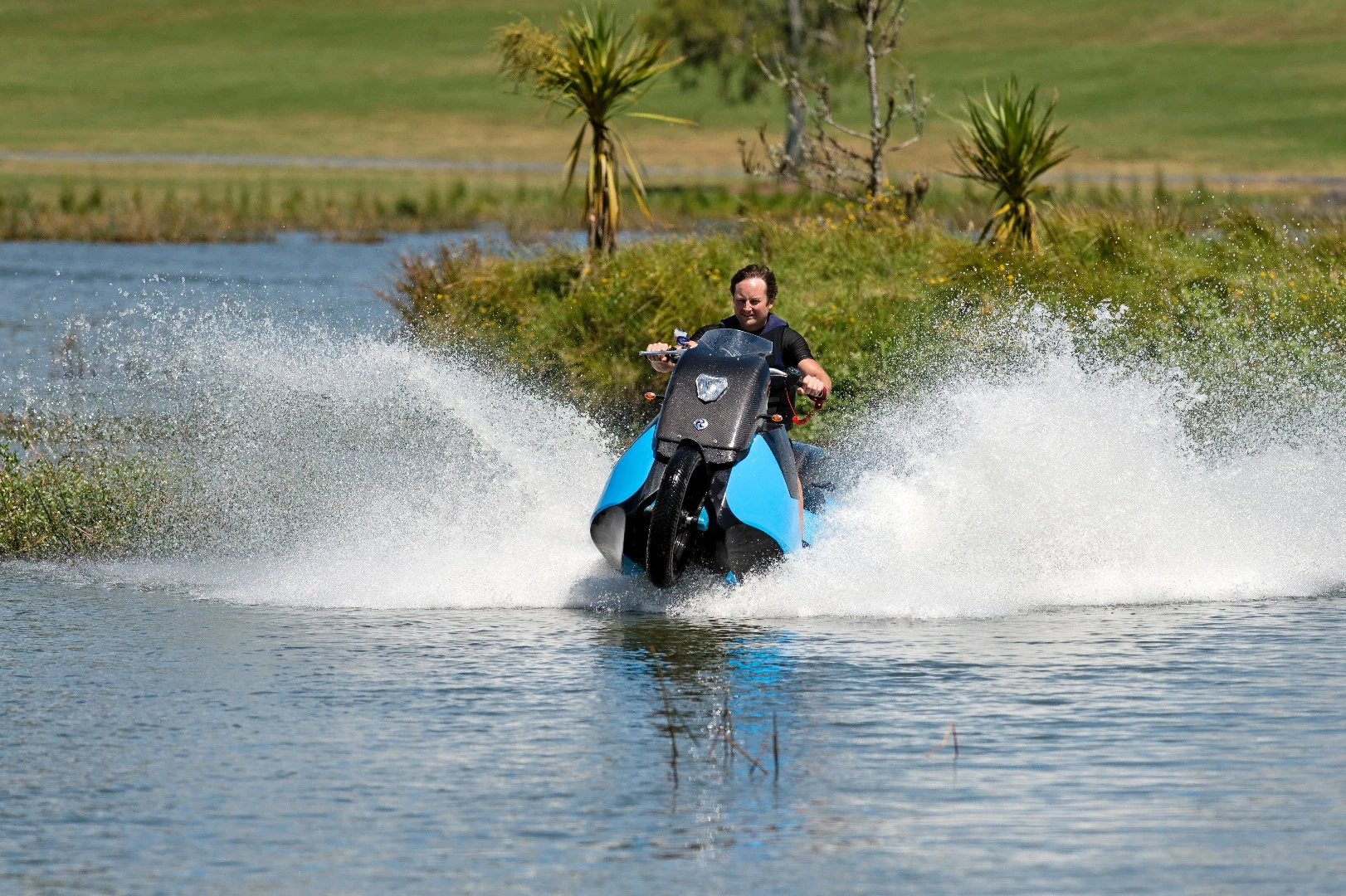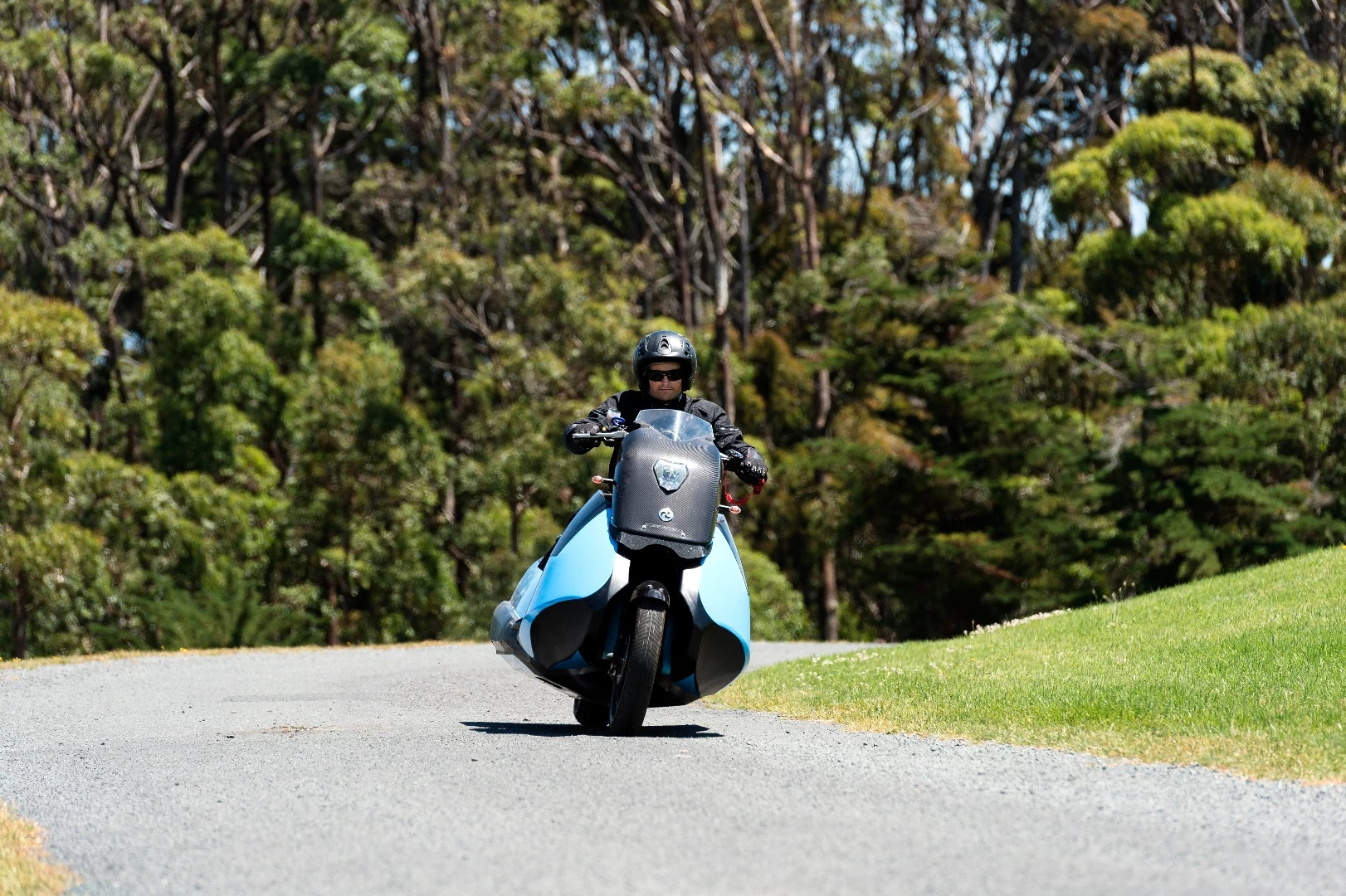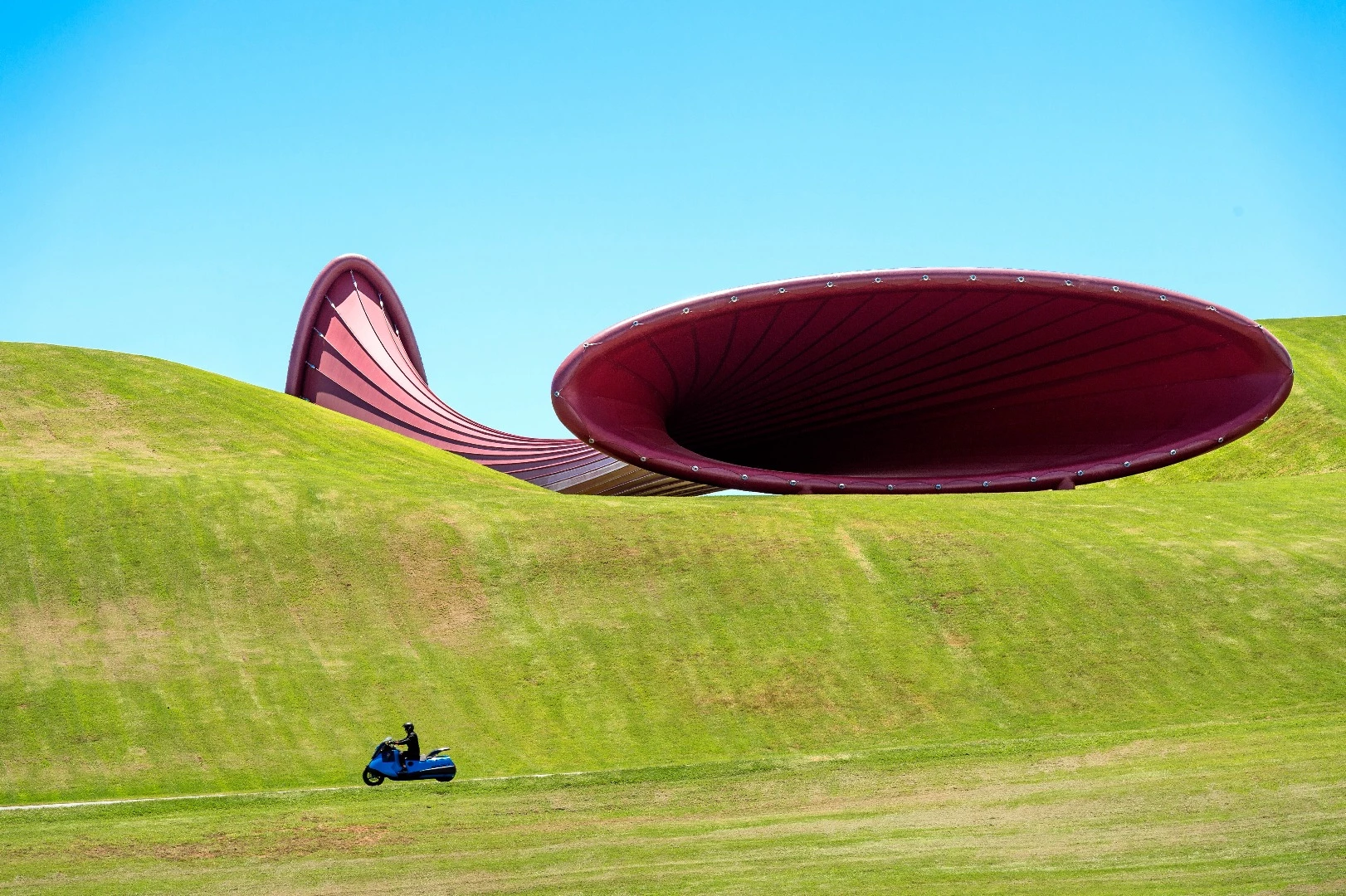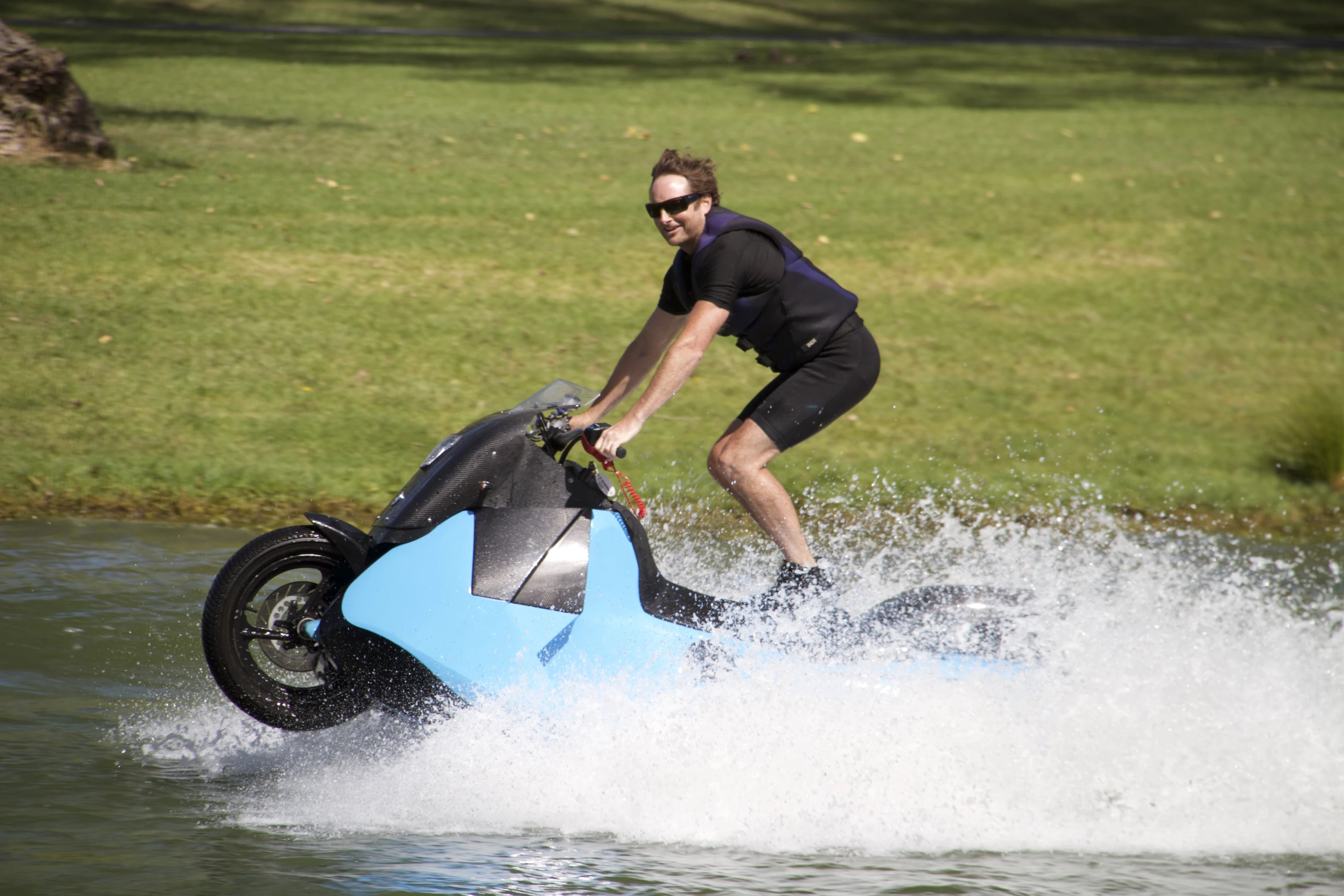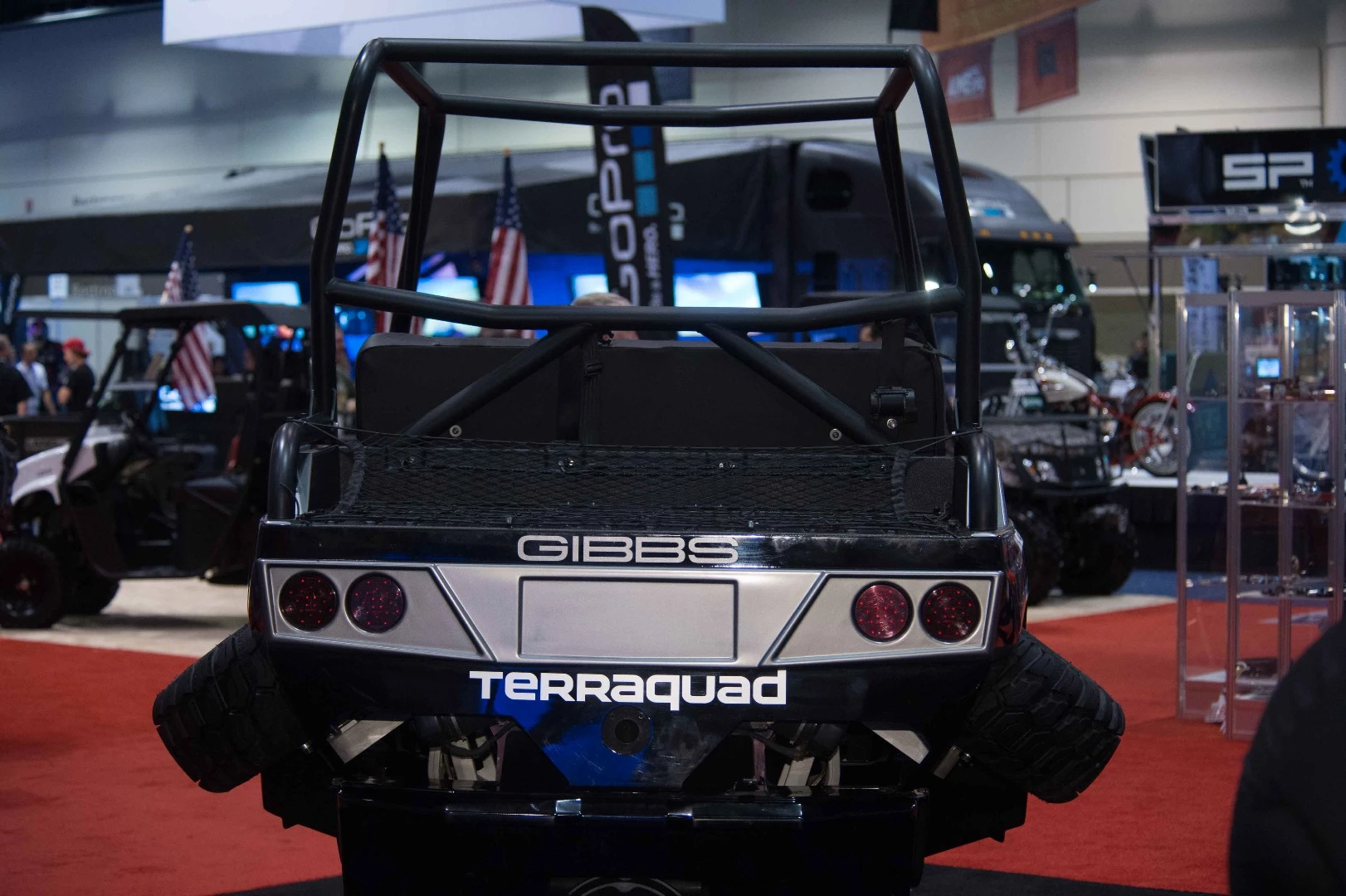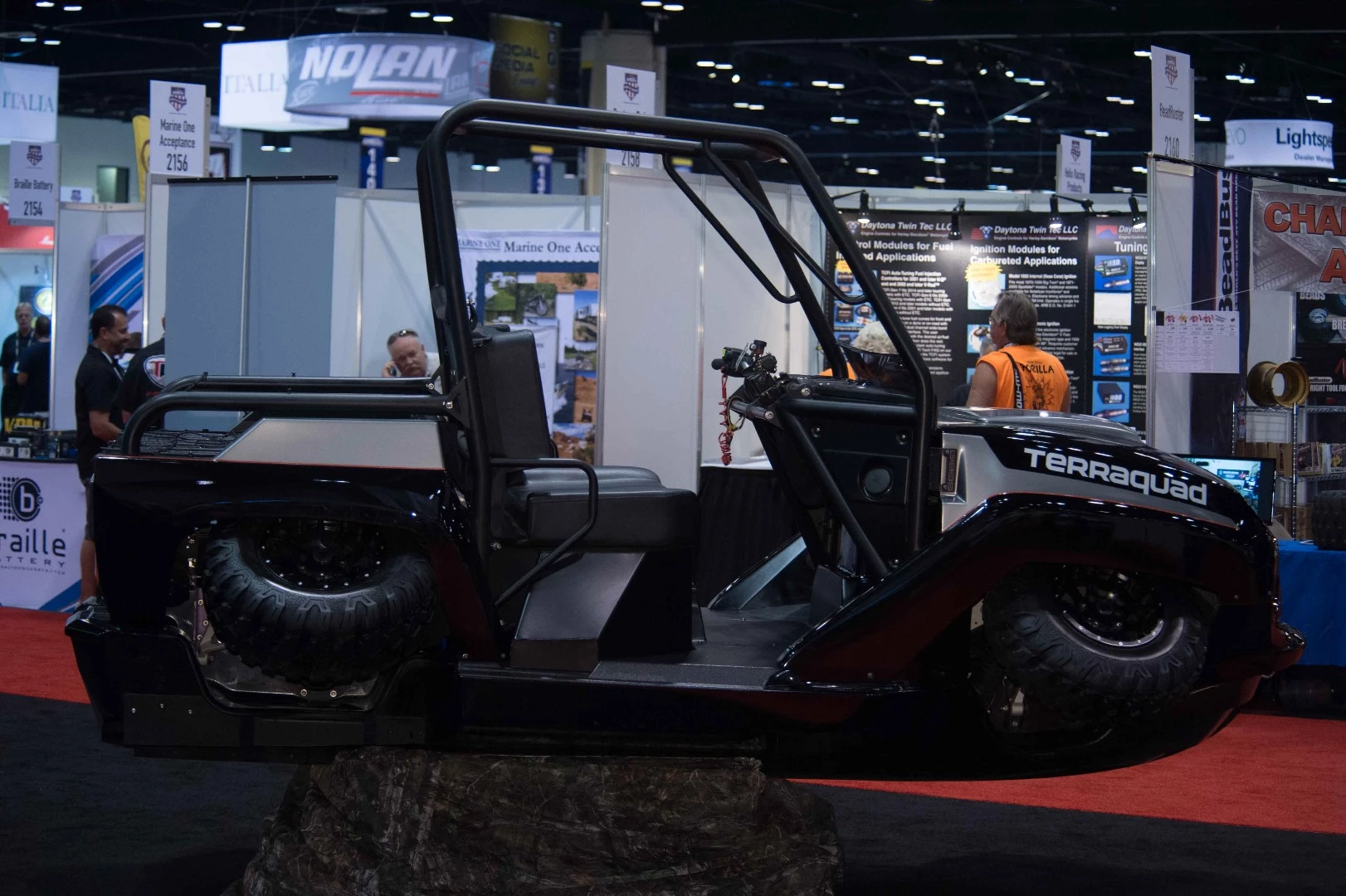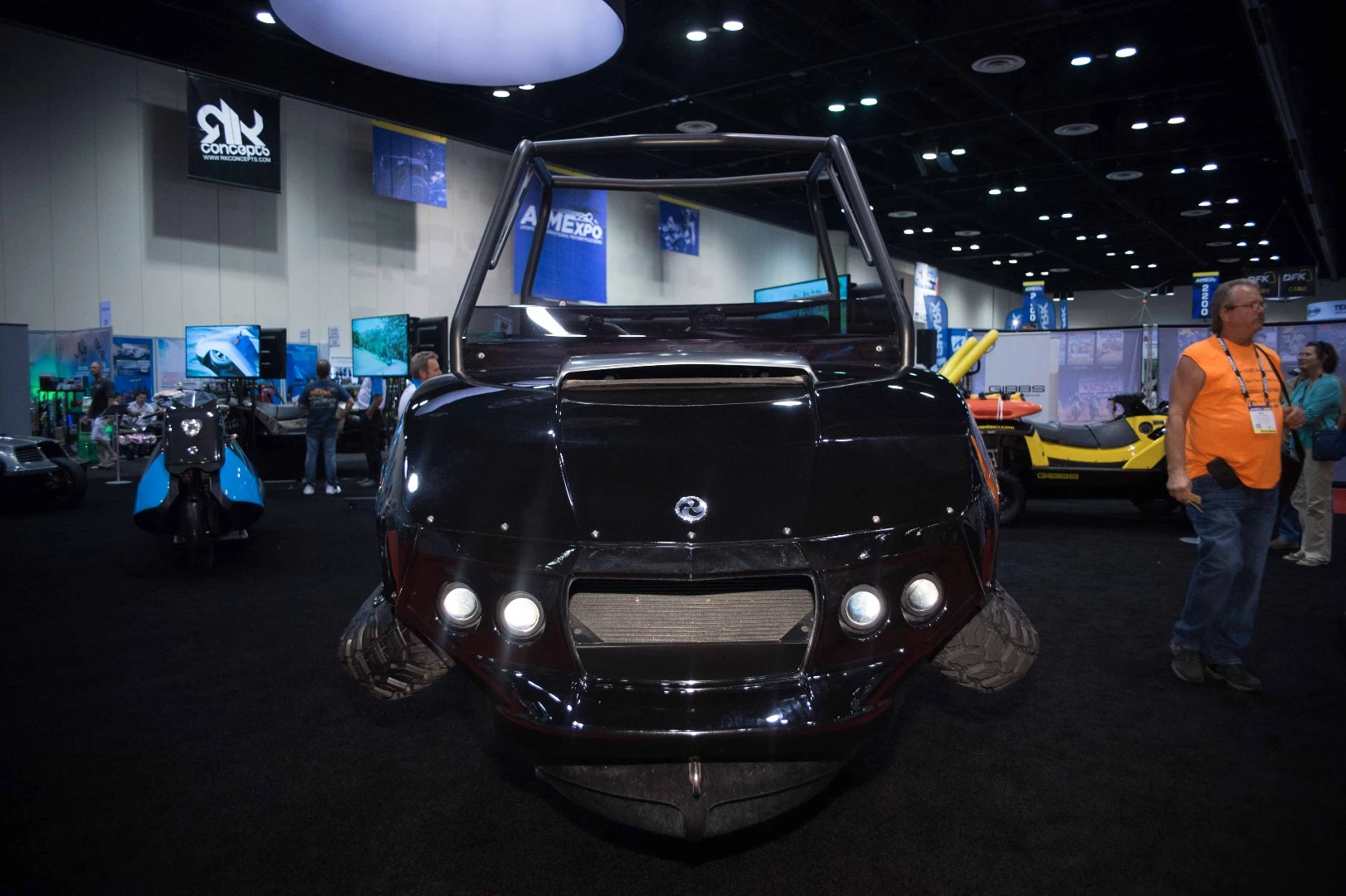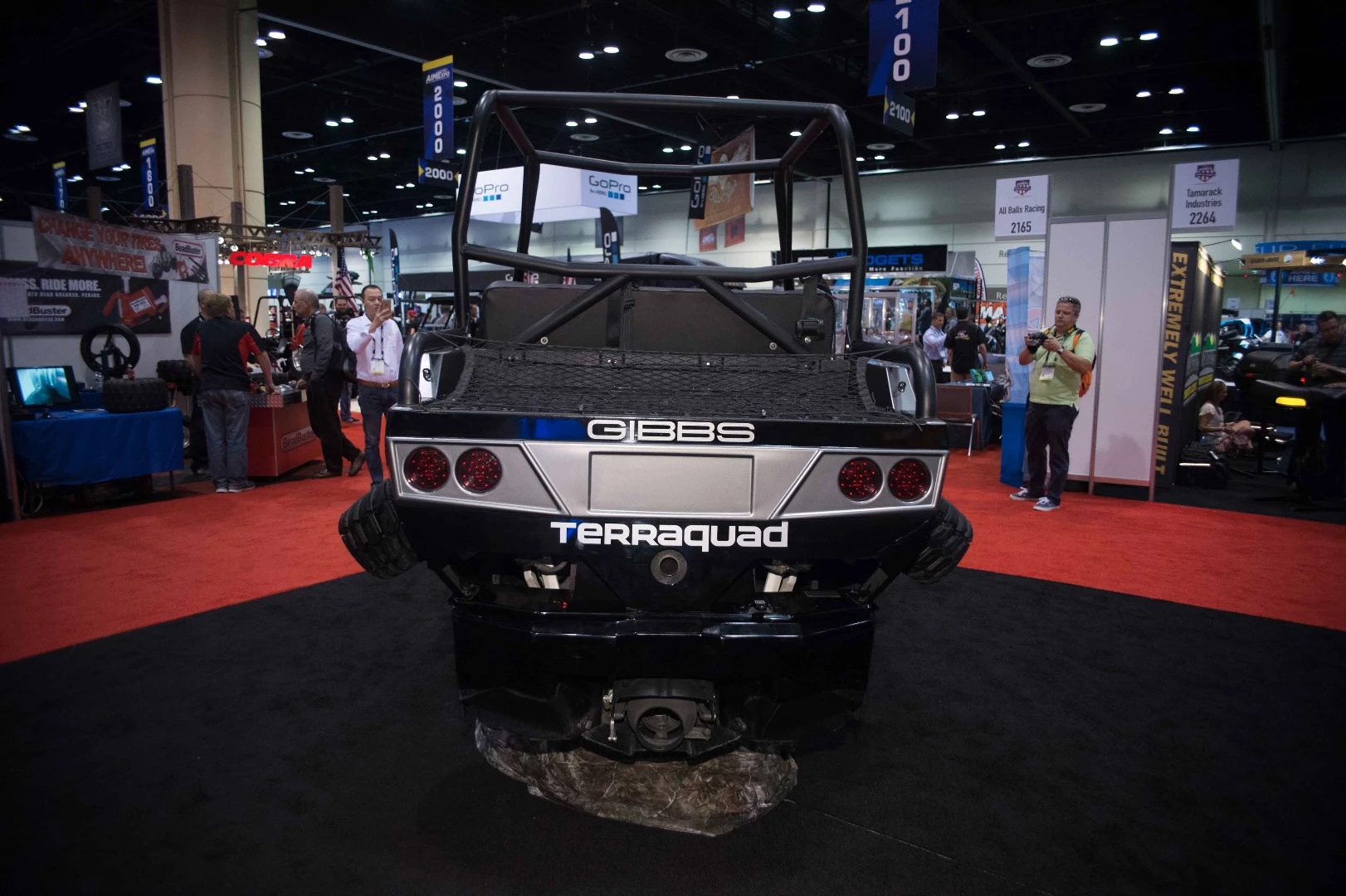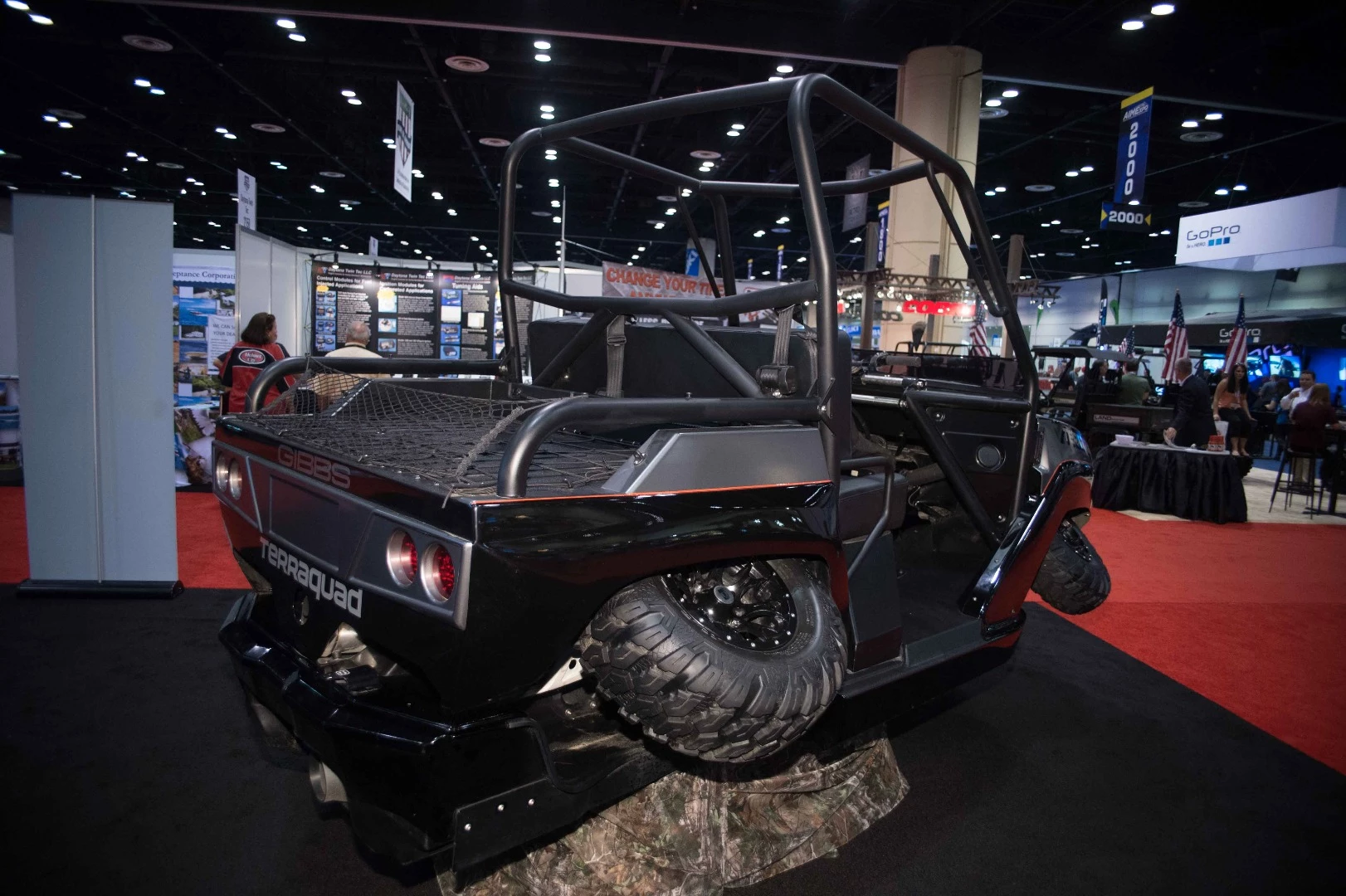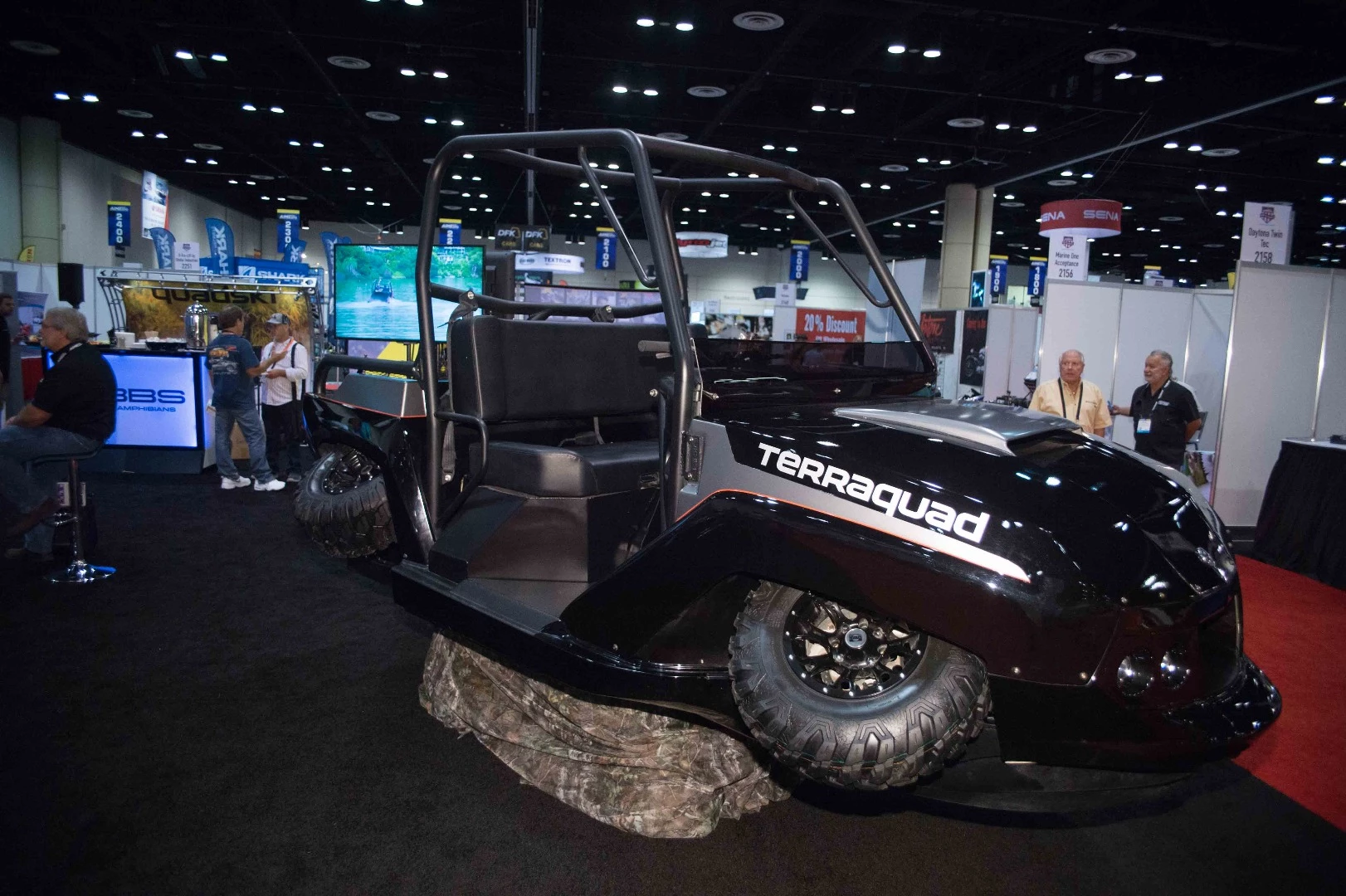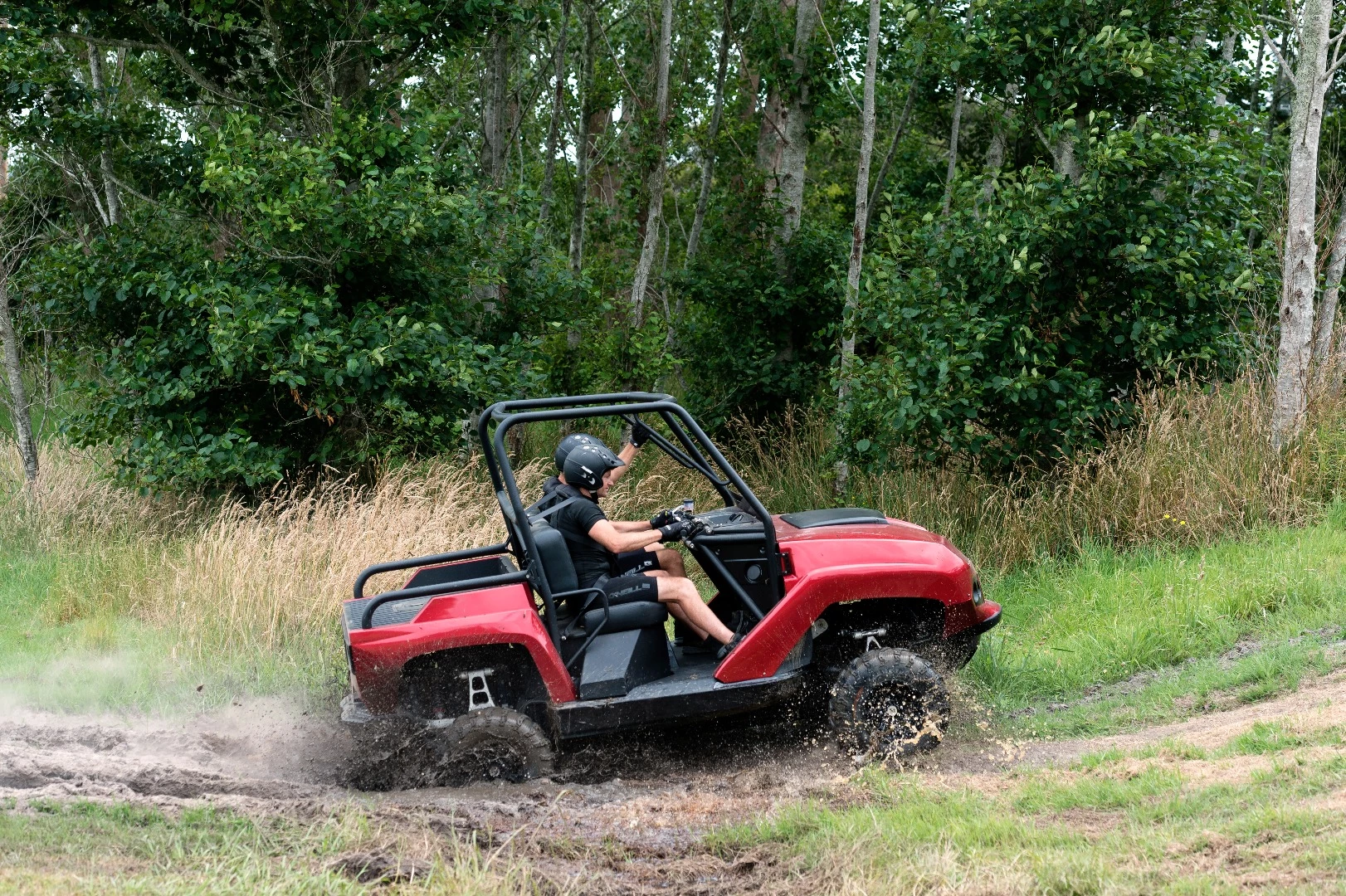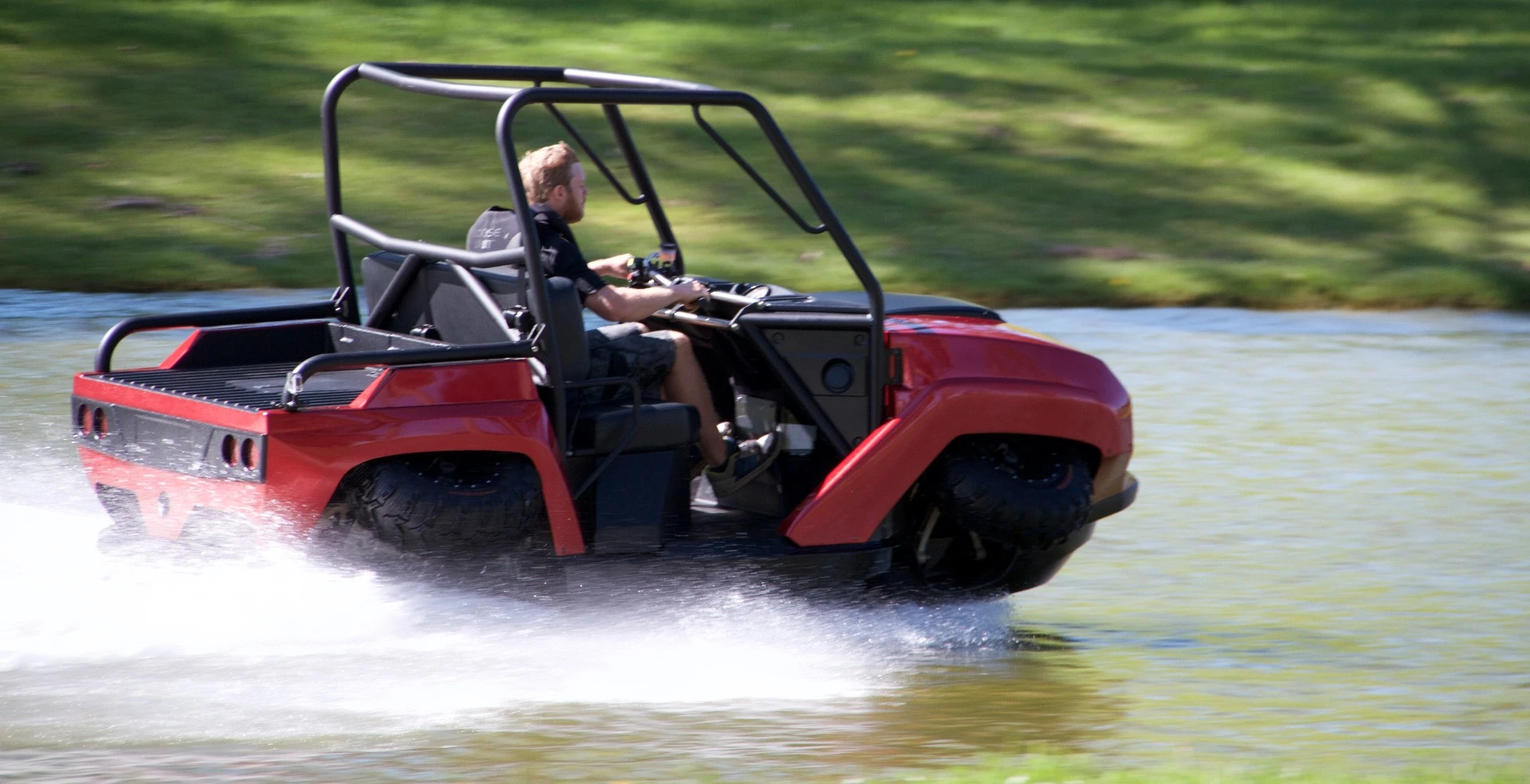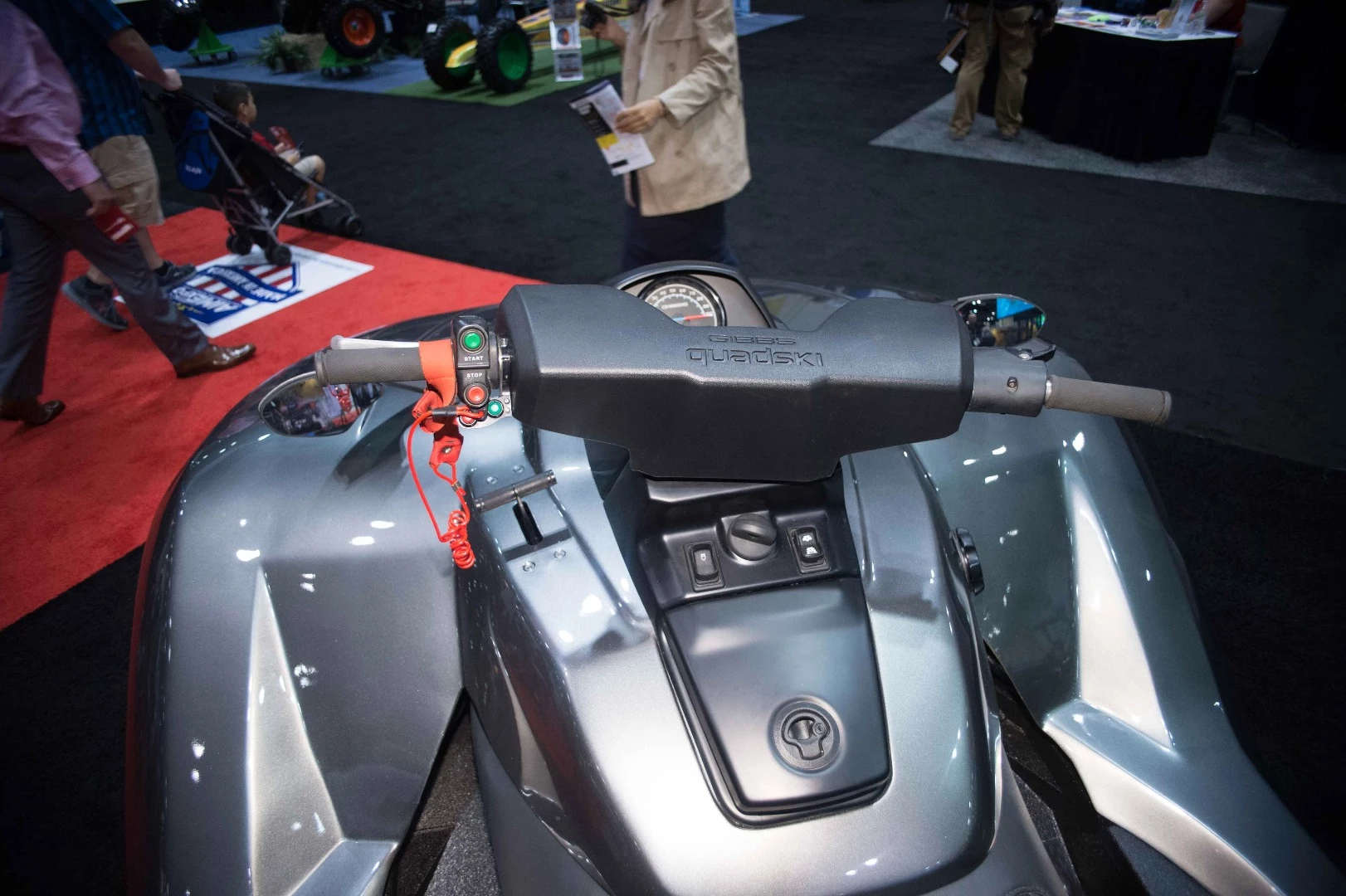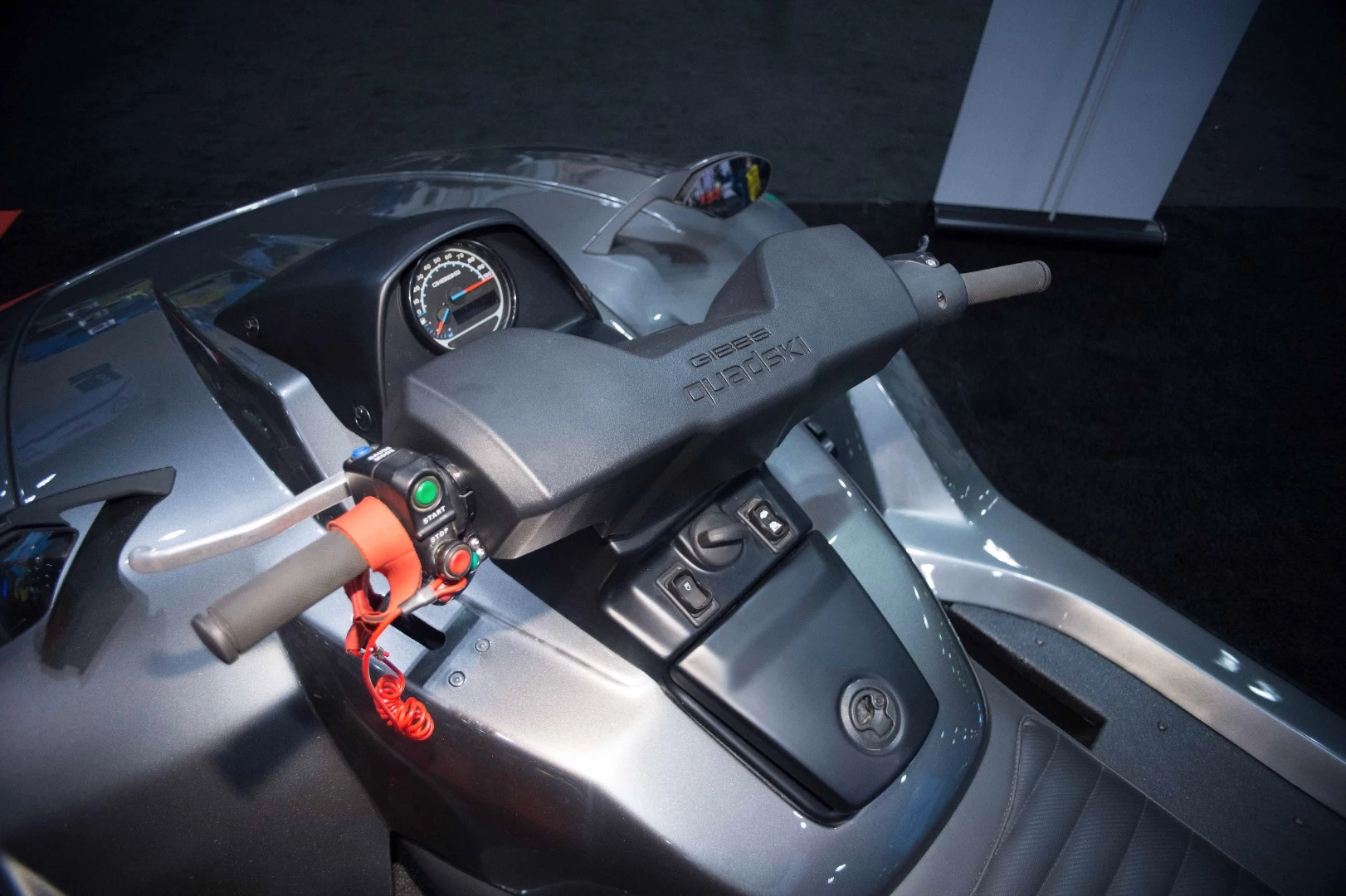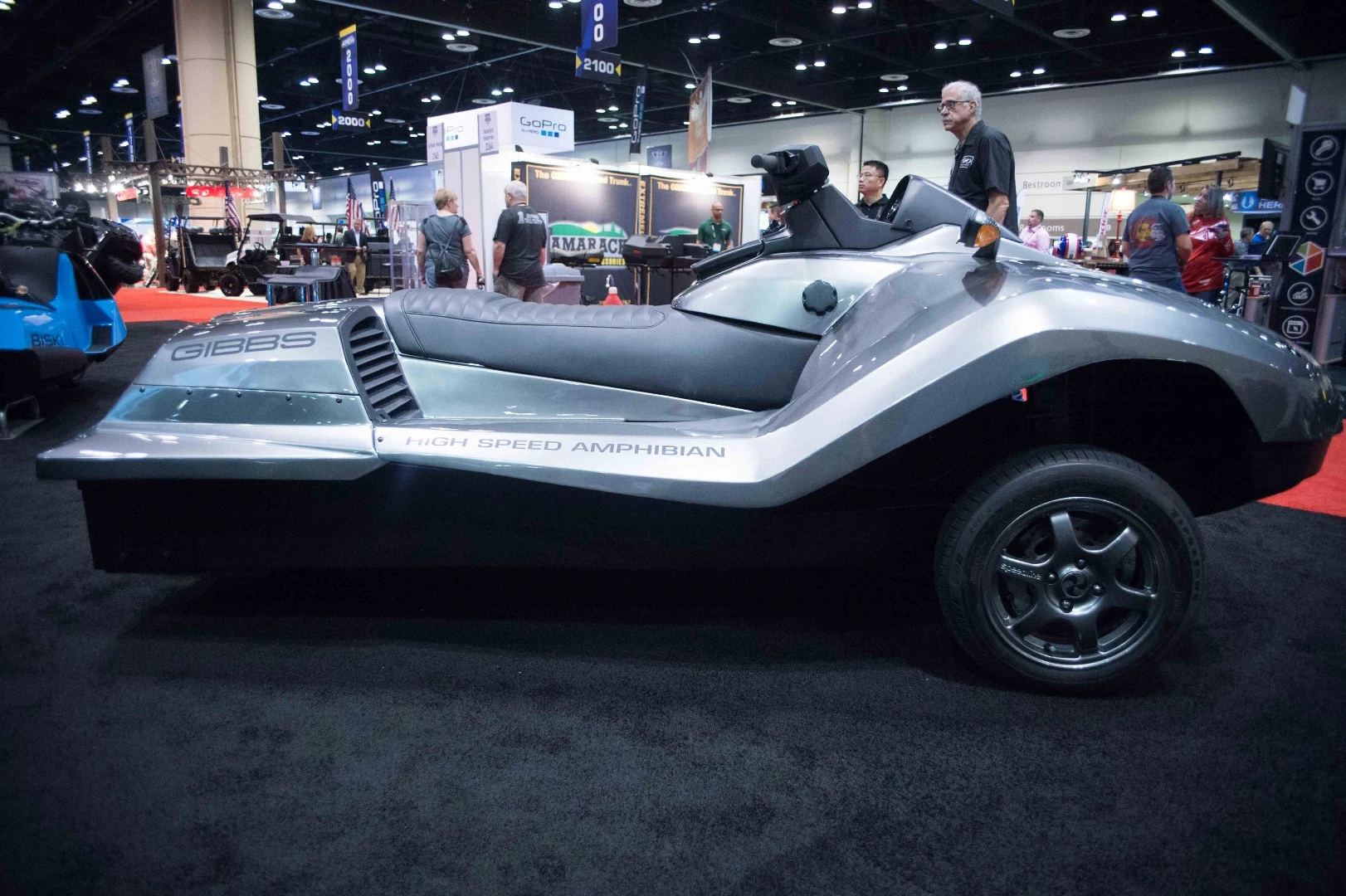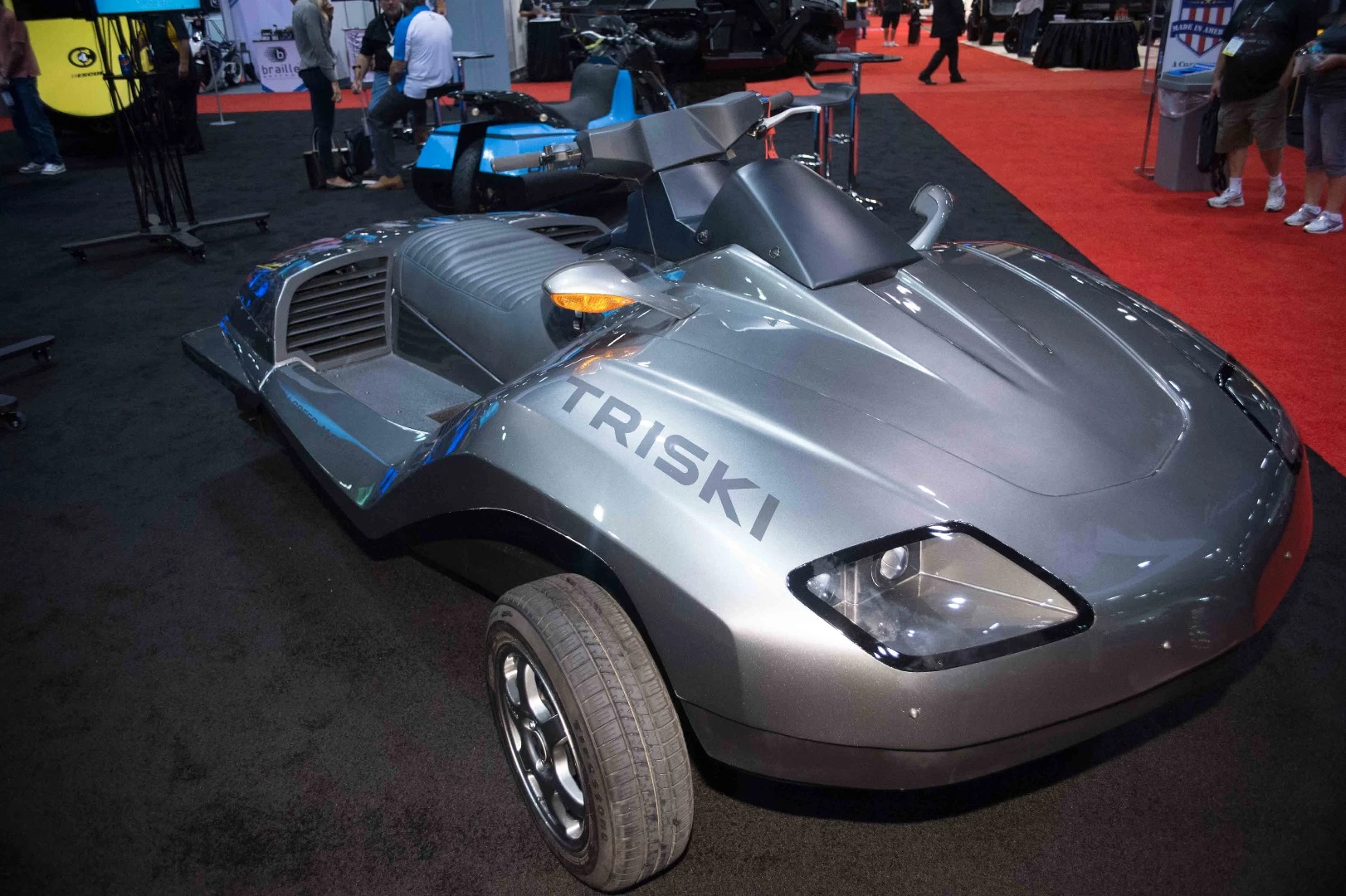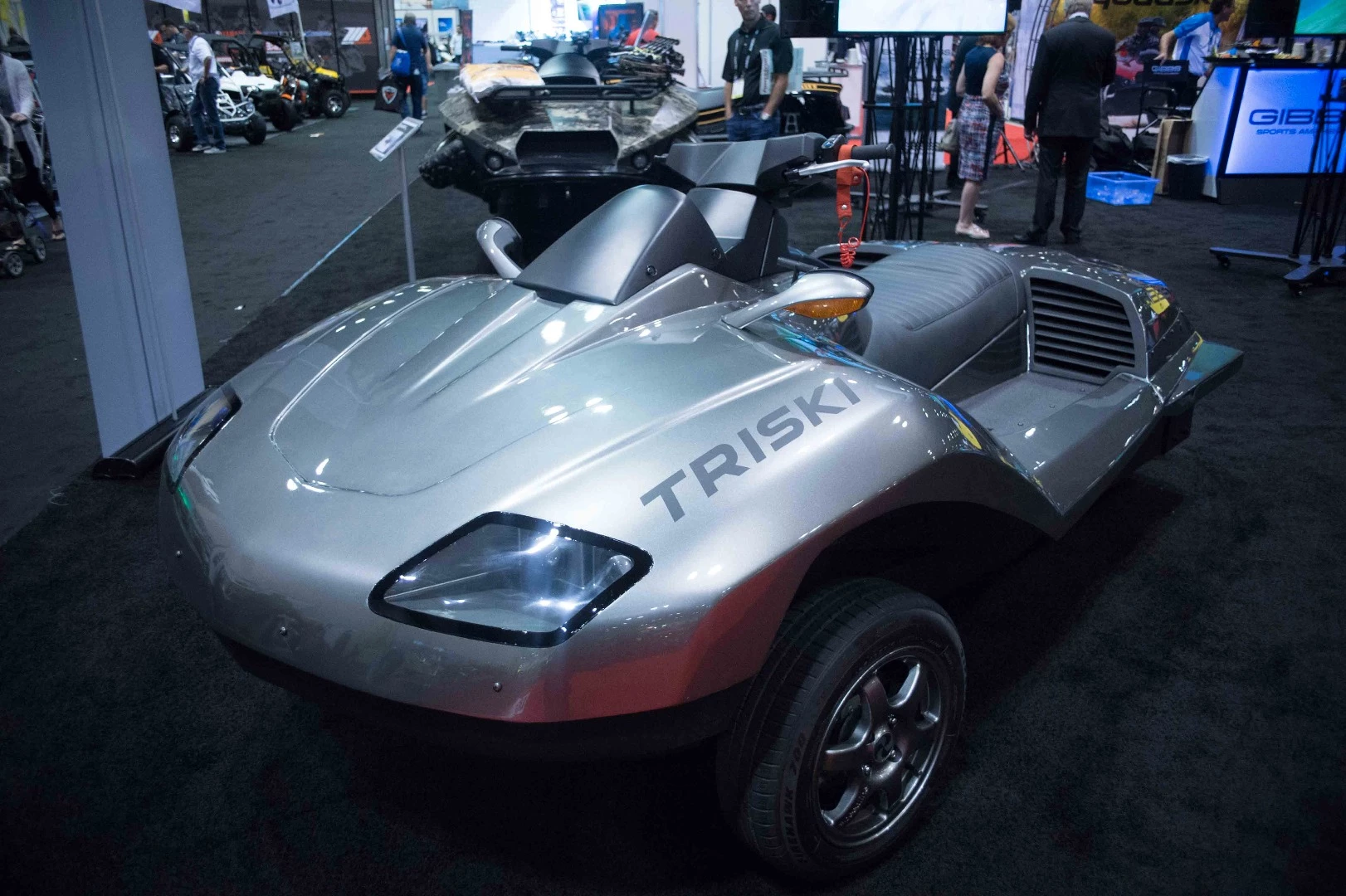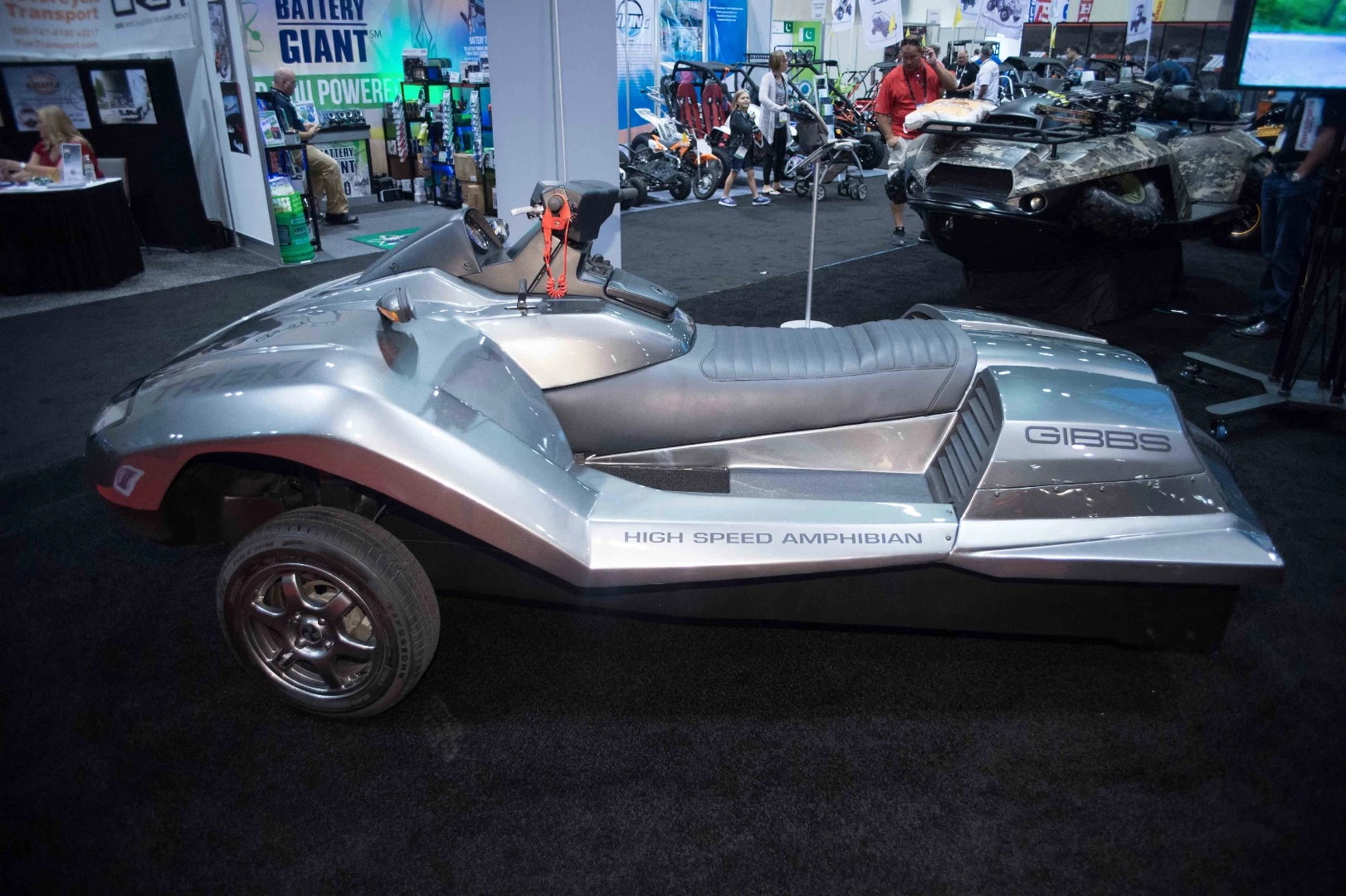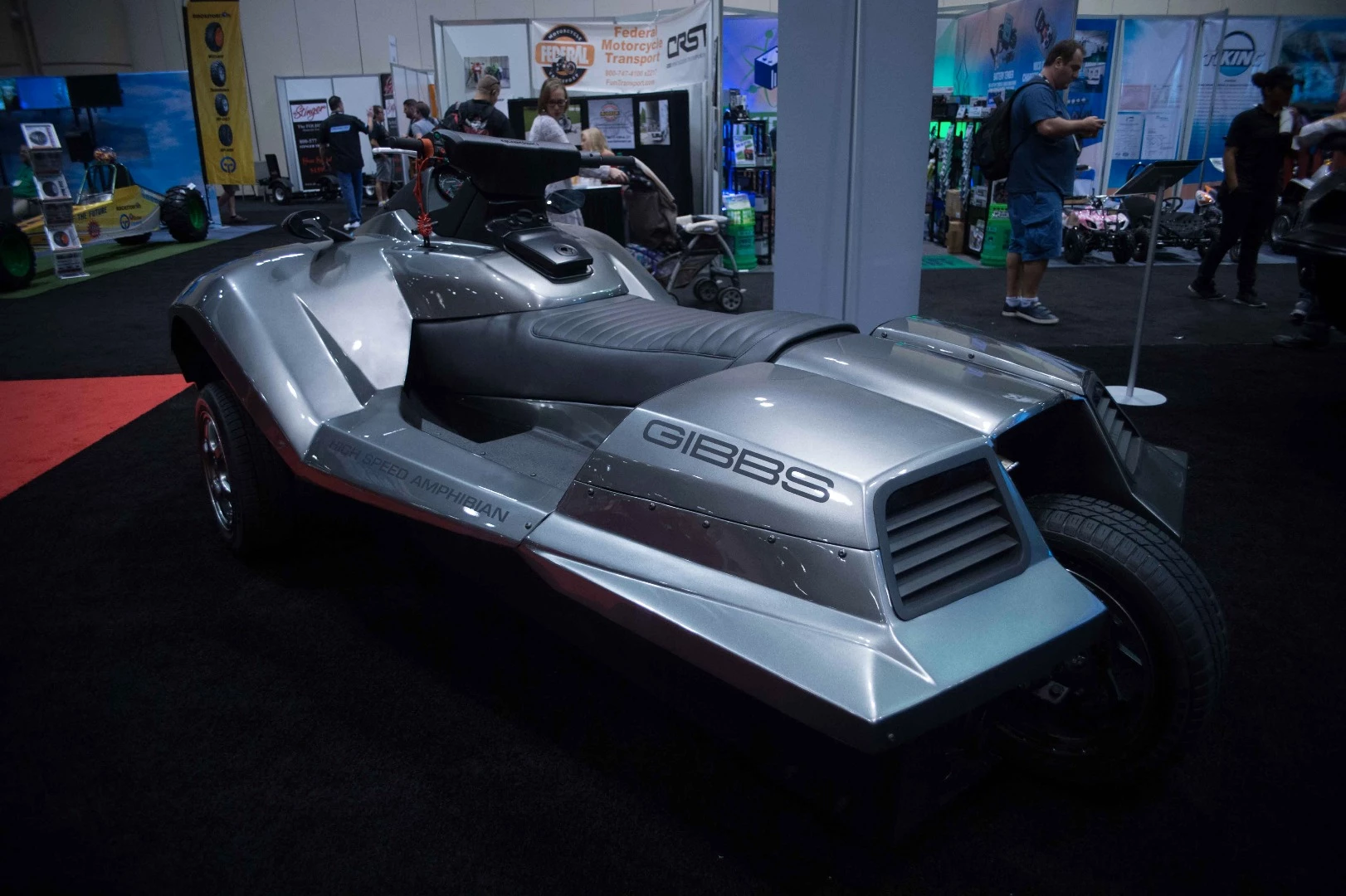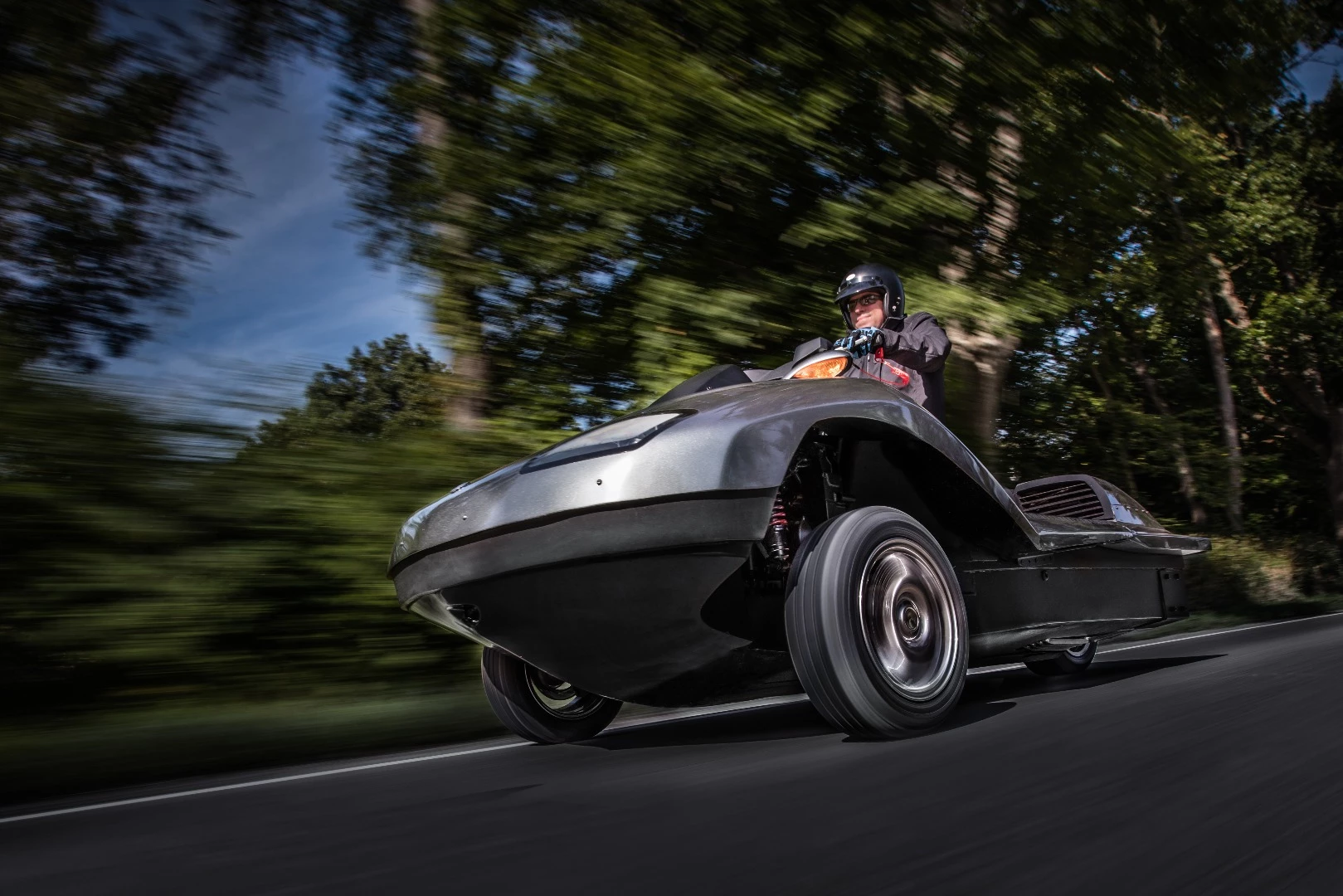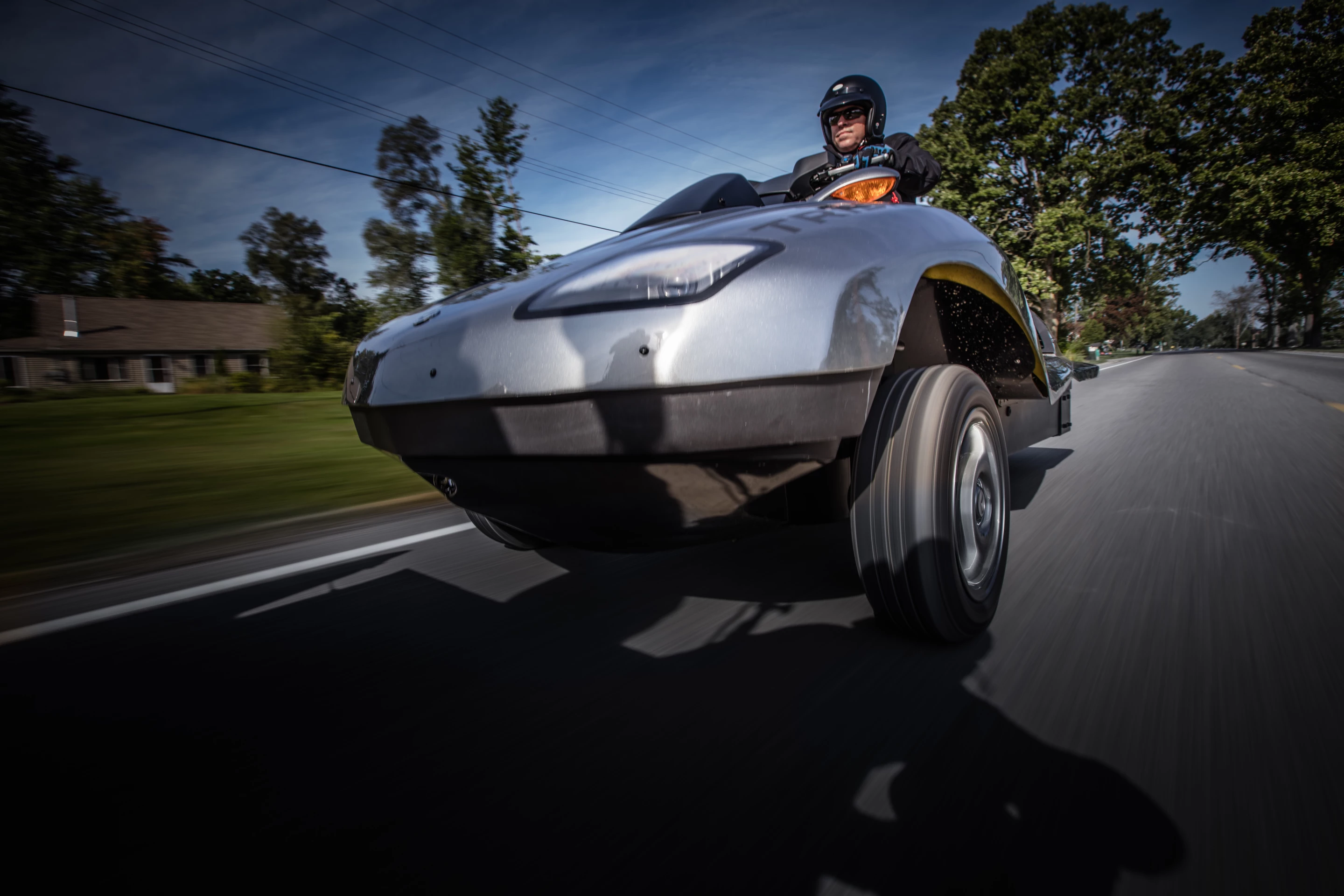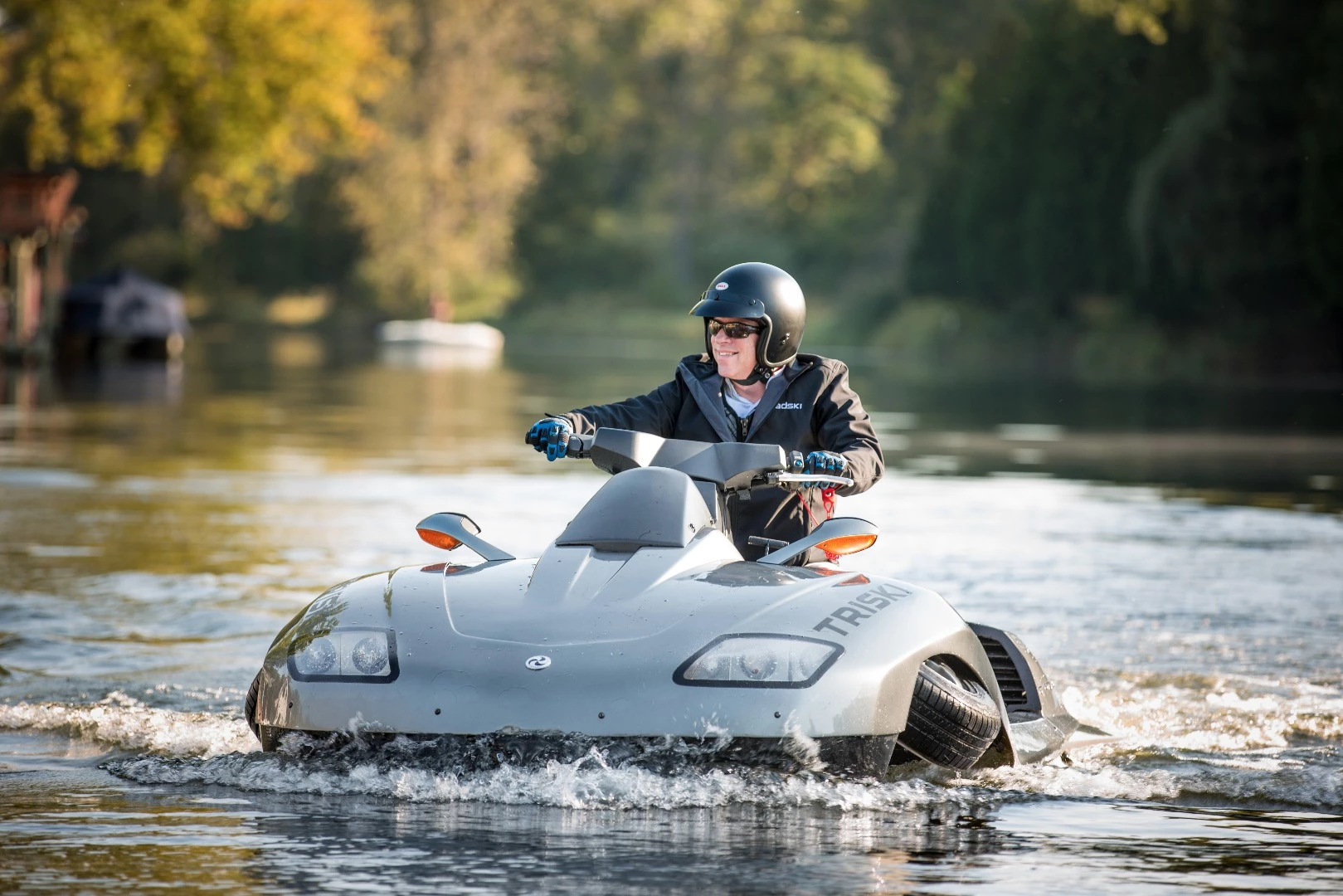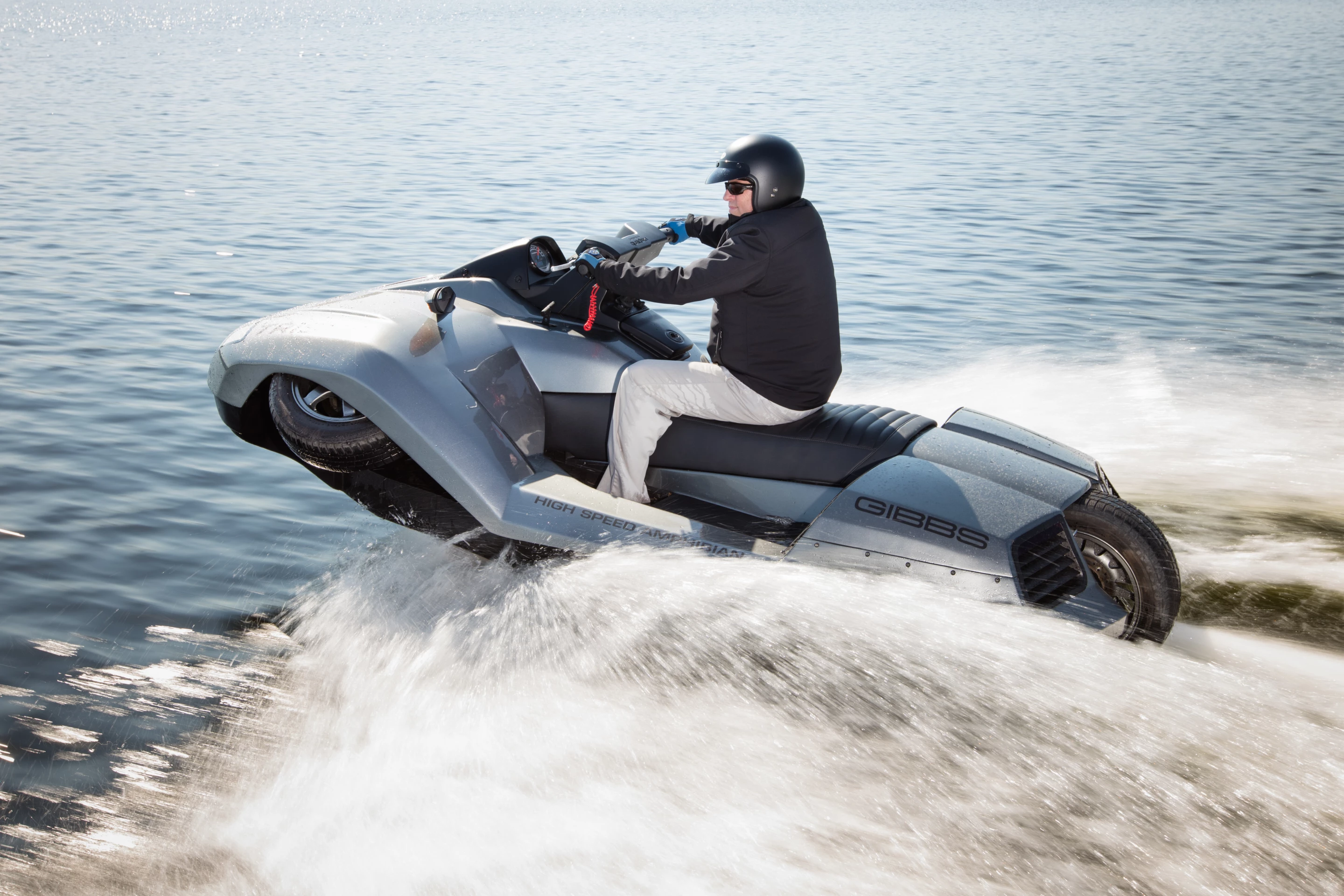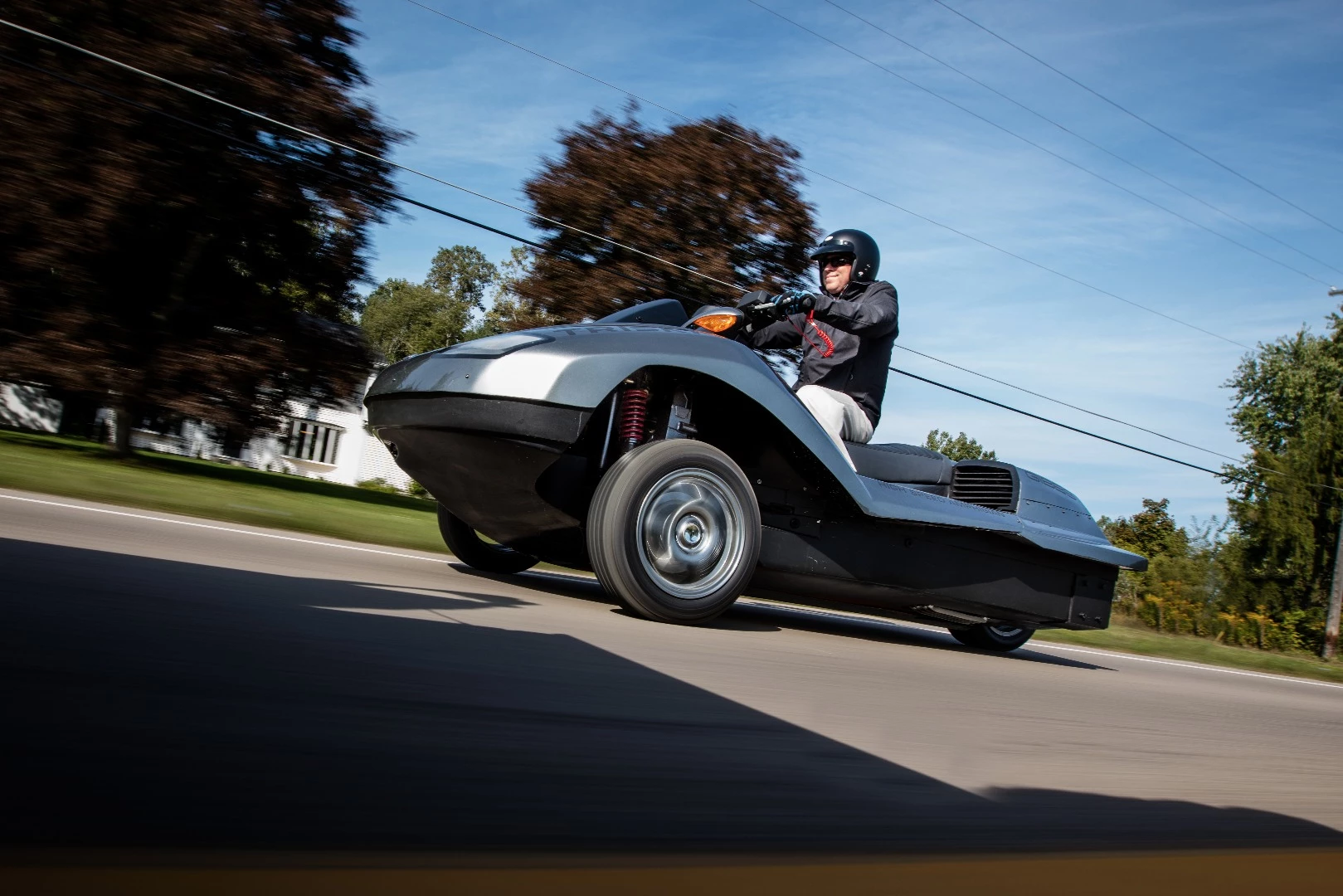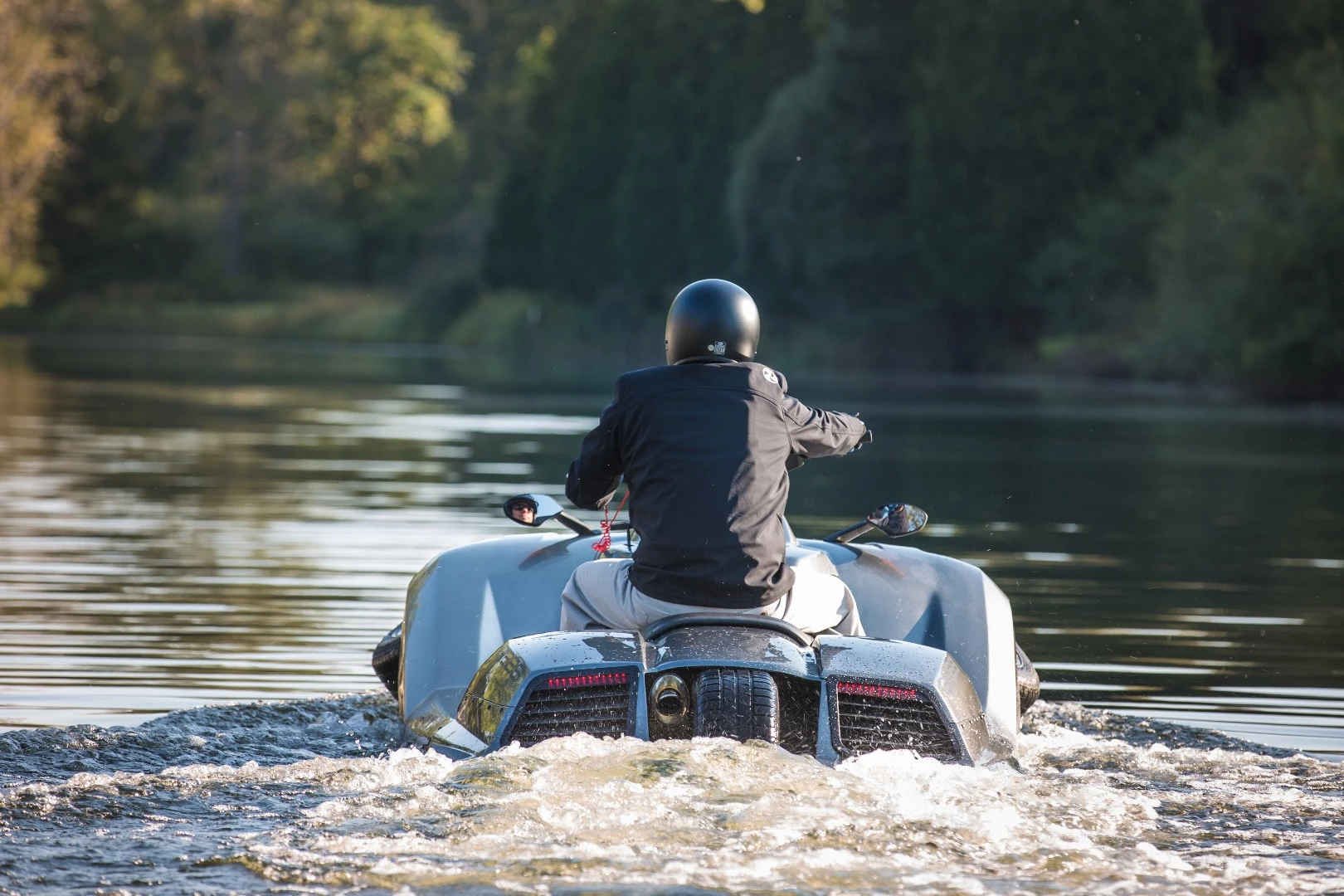Serial amphibian creator Alan Gibbs has used the American International Motorcycle expo in Florida to launch three new outrageous recreational vehicles. Not satisfied making ridiculously fun-looking amphibious quadbikes, cars and trucks, Gibbs has now built two-and three-wheeled motorcycles that you can ride straight down a boat ramp into the water. At the touch of a button they convert to jet skis, retracting wheels out of the way and switching to jet propulsion. There’s almost no delay – the switch from road mode to water mode is done in less than 5 seconds, so you barely even lose momentum as you ride in or out of the water.
We’ve written many times about Kiwi entrepreneur Alan Gibbs and his remarkable amphibious recreational vehicles – the 100 mph Aquada sportscar, the Quadski ATV and the Phibian “amphitruck” stand out. The Gibbs company has distinguished itself by building truly high speed amphibians that can reach “yee-ha” speeds both on land and water, as opposed to cheaper and more practically minded convertibles like the Sealegs machines. Gibbs amphibians are engineered for excitement.
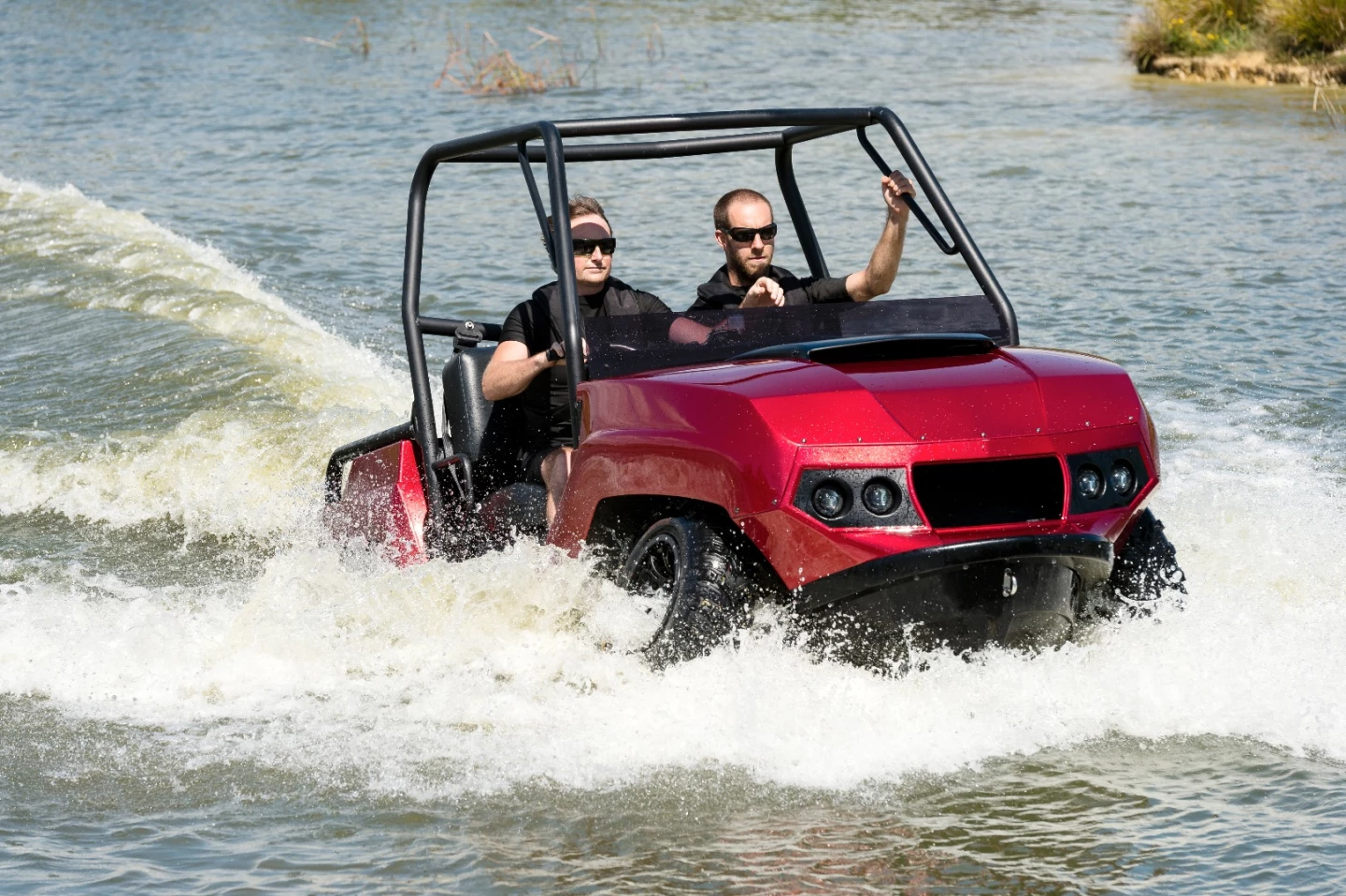
Gibbs originally wanted to build proper James Bond-style amphibious cars like the Aquada, but found there was a ton of regulatory issues involved trying to meet safety standards for a passenger car. Recreational vehicles like ATVs aren’t subject to the same scrutiny, and offered a quicker path to market.
Of course, motorcycles and trikes have much less stringent safety requirements as well, so Gibbs has just unveiled three new concepts – one ATV and two street-legal amphibians that fall into the motorcycle category. There’s the Terraquad side-by-side ATV and Triski three wheeler, which use large engines to deliver 135-plus horsepower giggles on land and water. And there’s the fascinating Biski – a 55-horsepower scooter that’ll easily beat highway speeds on land and go nearly 40 mph on water as well. Check it out in action:
The Terraquad amphibious side-by-side ATV
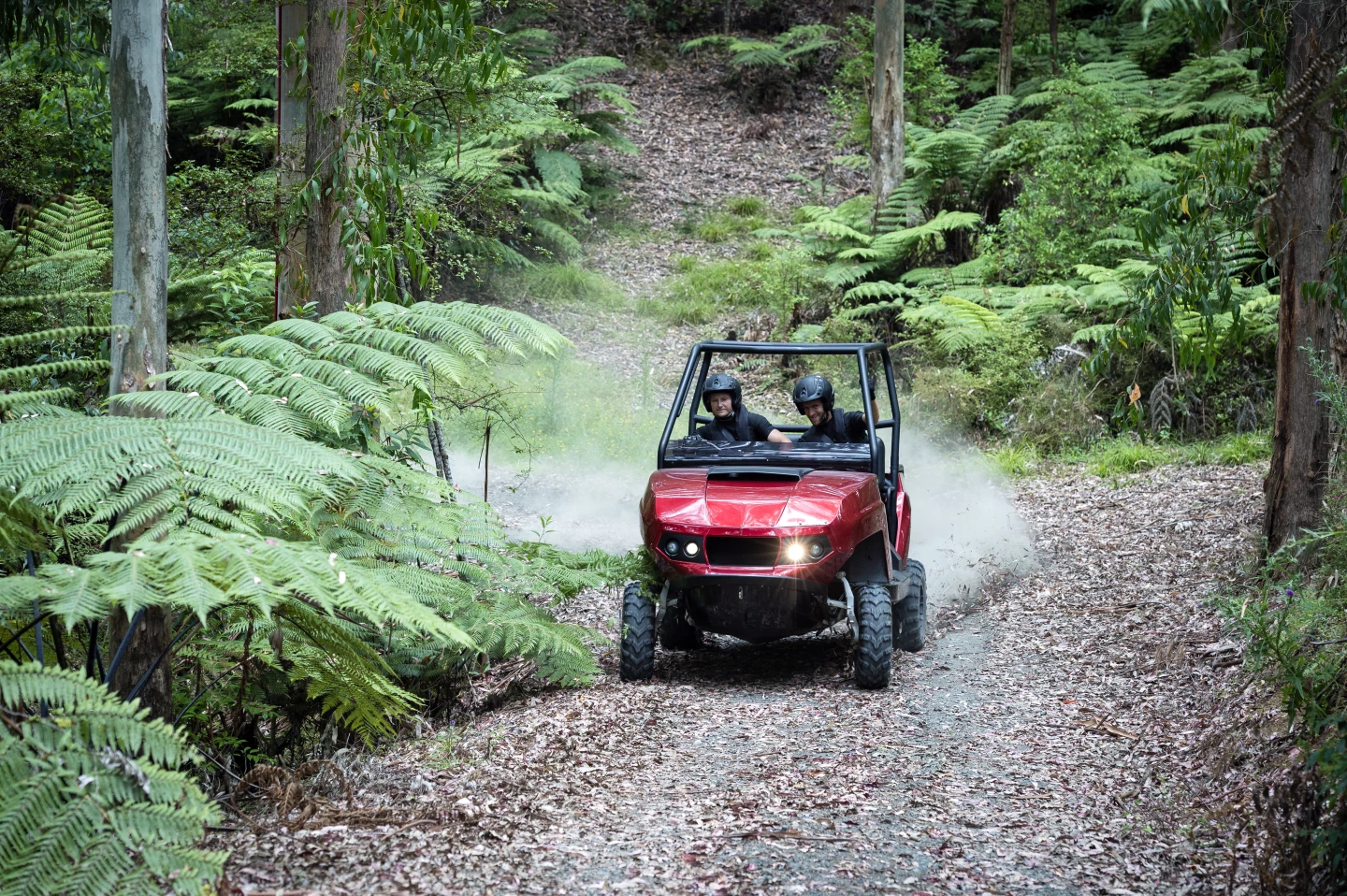
The terraquad is a side-by-side two-seater with its driver controls on a sliding rail unit so it can become left-hand drive, right-hand drive or central drive to balance it in the water if it’s being operated solo.
It uses a 140-horsepower version of the BMW K1300 engine to provide a limited top speed of 50 mph (80 km/h) on land and 40 mph (64 km/h) on the water. Transition from land to water or vice versa happens in just 2.5 seconds, as the Terraquad’s four wheels are pulled up and angled out of the way on their long-travel high suspension struts.
The Triski amphibious three-wheeler
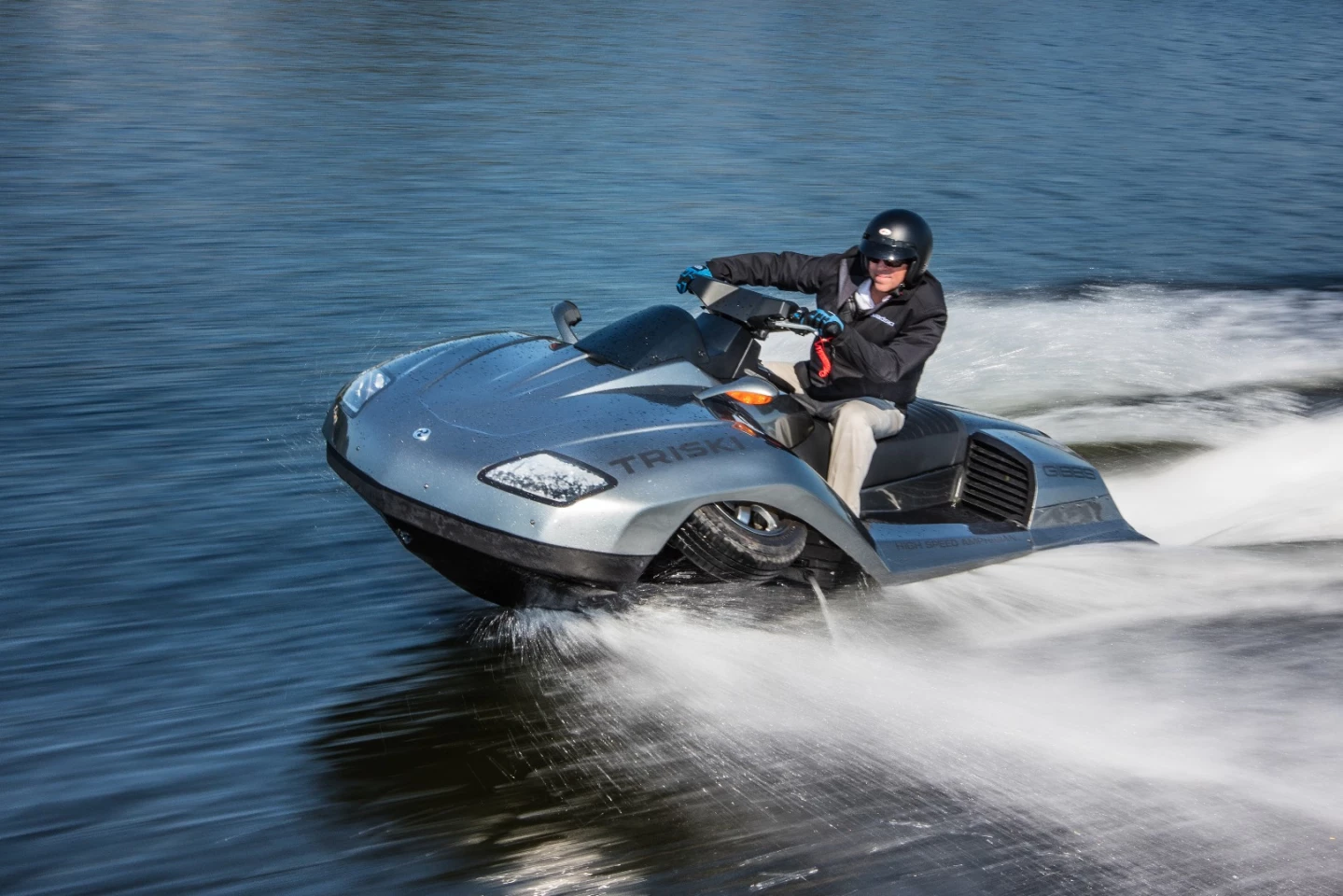
While ATVs are not road-legal in many areas, two- and three-wheel motorcycles face far fewer restrictions. So it makes sense for Gibbs to explore amphibious motorcycles as a quick path toward road-legal amphibious fun machines.
The Triski is a little like Can-Am’s popular Spyder three-wheeler on the road. It uses a similar handlebar setup to steer its two front wheels, as well as twin powerful jets out the back. Upon hitting the water, the front wheels are retracted and angled like the ones on the Terraquad, but the central rear wheel is pulled up into a recess beside the exhaust to let the jets do their work.
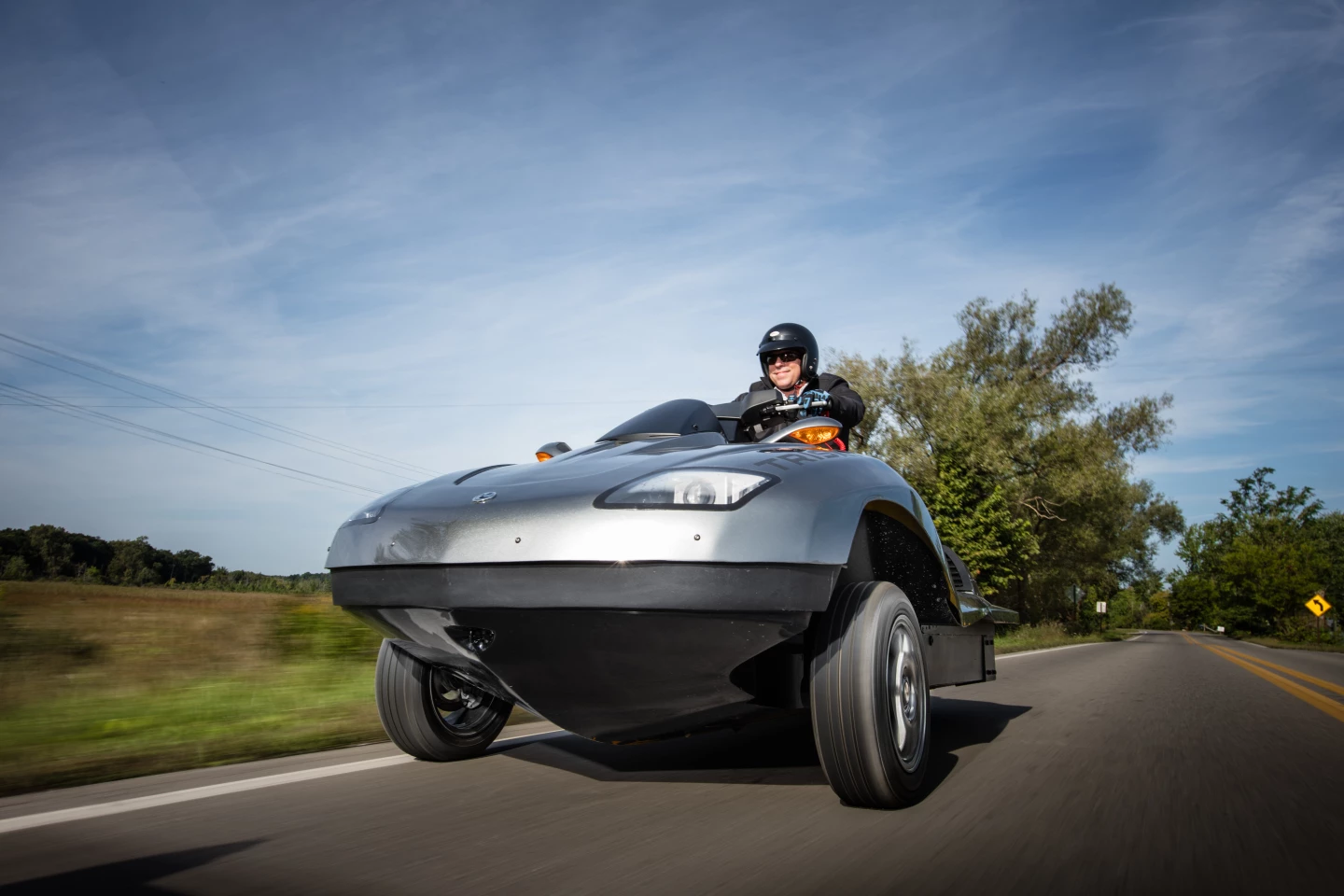
It looks like it could support a passenger, and its 135-horsepower, twin cylinder turbocharged engine gives it a top speed of 85 mph (137 km/h) on land and 40 mph (64 km/h) on the water. Transition between modes takes about 5 seconds.
The Biski amphibious motorcycle
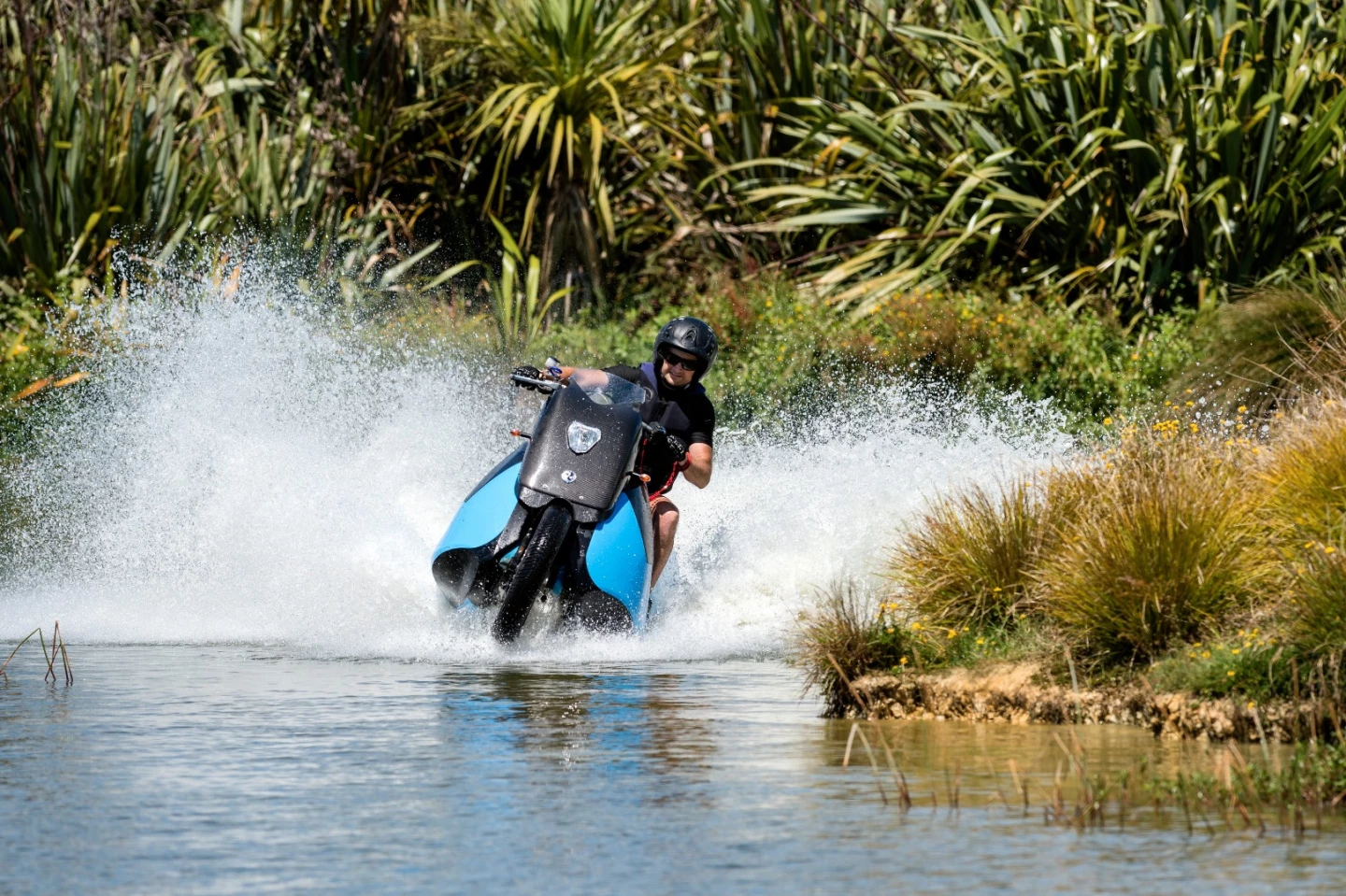
Probably the most fascinating of the three to watch is the Biski, which looks pretty much exactly halfway between a maxi-scooter and a small jet ski. It’s a street legal amphibious motorcycle with a 55-horsepower, twin cylinder engine that’s capable of 80 mph (129 km/h) on the road or 37 mph (60 km/h) on the water.
Like the Triski, the Biski pulls its wheels up and out of the way, and it’s driven and steered by a jet on either side of the wheel. It’s worth noting that when you switch to water mode, it appears the front wheel is locked in place, dead straight. The transition takes around 5 seconds, and barely slows your progress as you ride off the road, into the water and go.
The Biski comes in at a wet weight of 228kg - only 9kg heavier than a Yamaha TMAX scooter, which is a fairly impressive achievement. It also looks remarkably steady in the water, allowing riders to climb on and off the bike as it floats.

Presumably the Biski is going to be far cheaper than the other Gibbs machines, because it doesn’t need the complex folding front suspension the others do. As a functioning motorcycle, it’ll be useful in a wider range of contexts as well, and will take up very little space in the shed – maybe about as much space as a large touring bike as opposed to its stablemates, which will occupy a whole car space.
If and when they make it to production, the Biski and Triski will be the most convenient way by far for the average Joe to get his powerski kicks short of living on a lake. Jump on the bike, ride down to the lake, ride straight in, muck around having fun for half an hour, ride right out of the water and home again without needing to put a foot down.
Head through to the photo gallery for a closer look.
Very cool!
